Syrian Crisis
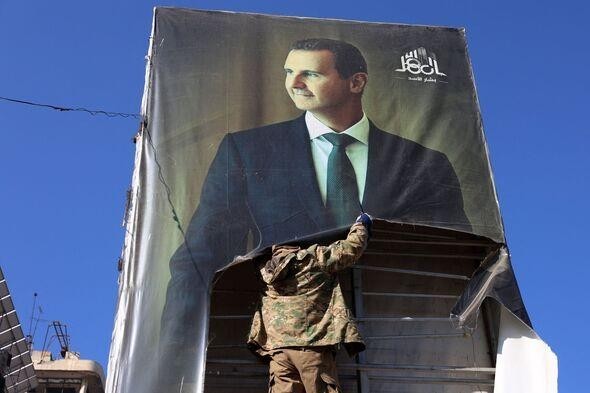
Context:
- Islamist militants in Syria‟s northwest launched a surprise attack last week against the forces of President Bashar al-Assad and made dramatic territorial gains.
- According to news agency Reuters, Assad, who ruled the country for 24 years, fled from the country to an undisclosed location in a plane.

1.
What has caused the recent escalation in Idlib?
- The recent escalation began with Syria‟s “Military Opposition Command” launching an offensive on November 27, seizing Aleppo and intensifying conflict.
- Earlier this month, Turkey opened two more military posts in Idlib in addition to its previously existing posts in northwestern Syria.
- Reports emerged on February 8 that the Syrian forces were encircling the Turkish observation post at Al-Eiss, a town in the province of Aleppo, capturing the town and some surrounding areas.
- On February 10, at least five Turkish soldiers were injured in attacks by the Syrians.
- This was followed by more attacks that resulted in the killing of two Turkish soldiers and another five being wounded.
- Following the repeated attacks on Turkish forces in the region, on Friday, Ankara threatened “imminent” attacks on Syrian government forces in retaliation.
- The UN said that the escalation in Idlib would result in a “bloodbath”.
2.
Enlist major stakeholders in Syria?
| Stakeholders | Role |
|---|---|
| Syrian government forces |
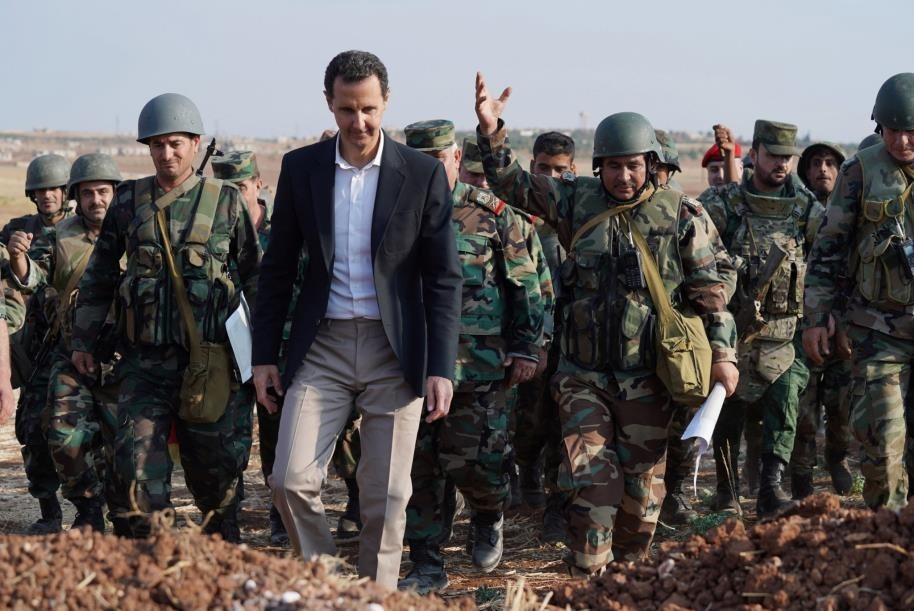 |
| Syrian Democratic Forces |
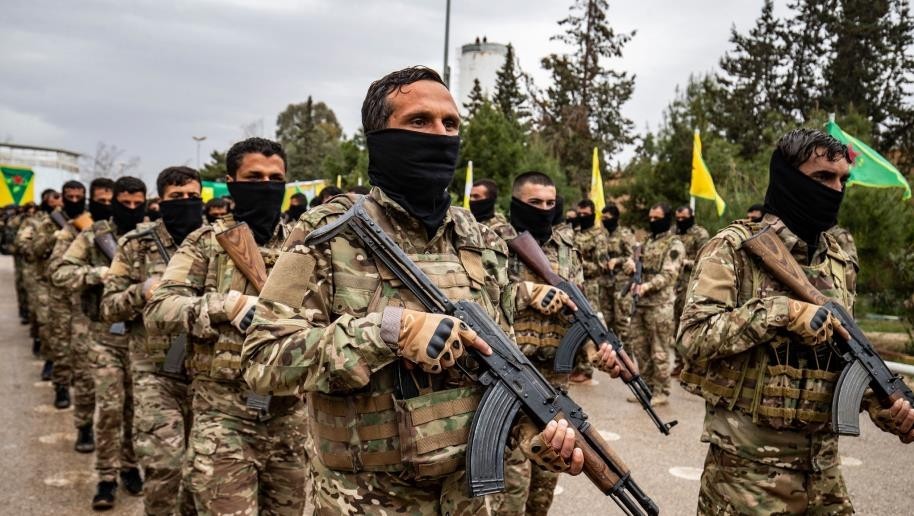 |
| HTS and other allied rebel groups |
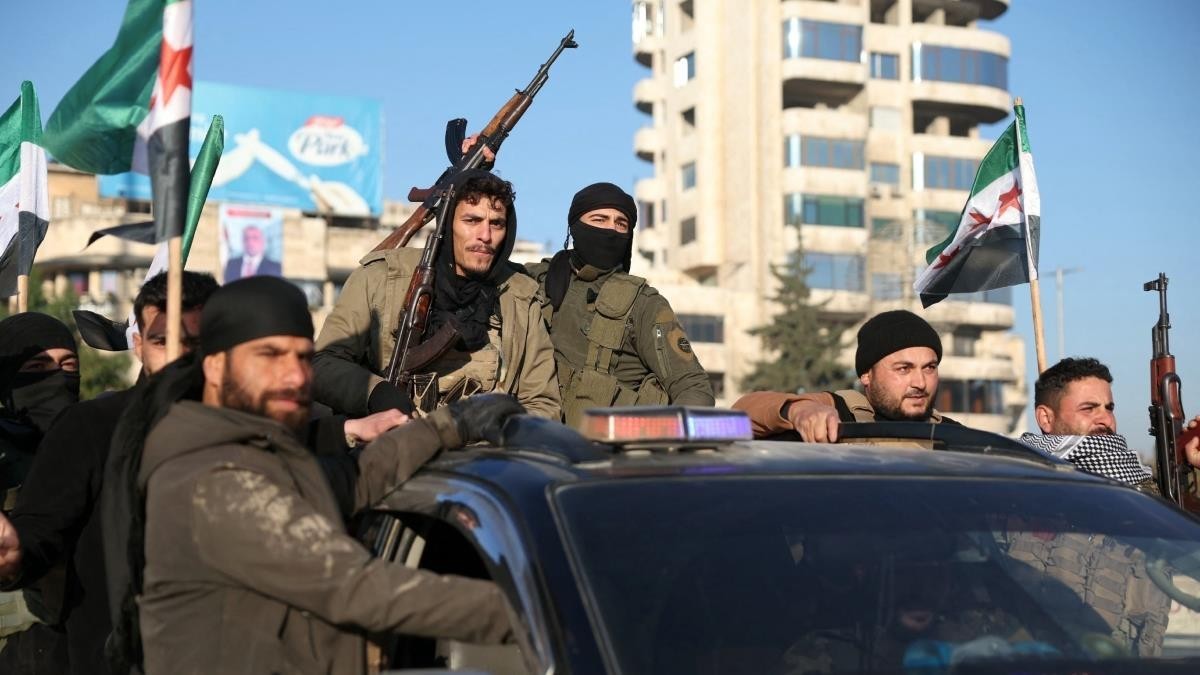 |
| Turkish and Turkish-aligned Syrian rebel forces |
 |
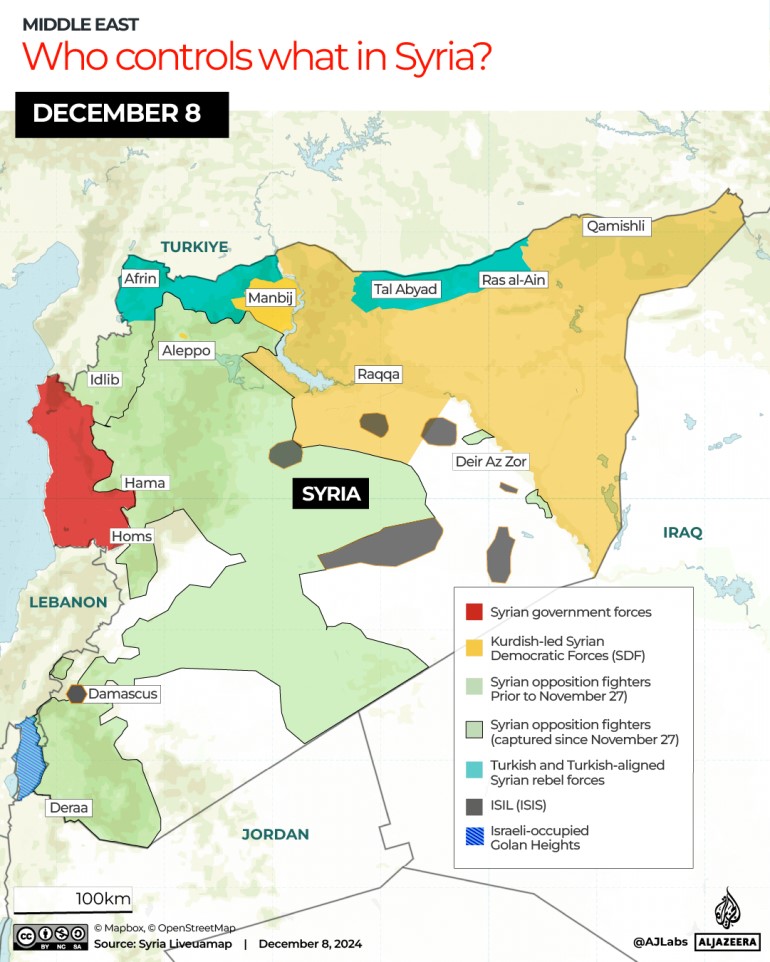
3.
Enlist the timeline of the recent Syrian crisis?
- In the early hours of November 08, 2024 morning, Syrian opposition fighters announced that they had captured the capital, Damascus, and that President Bashar al-Assad had fled the country
- In just 11 days, the 24-year rule of President Bashar al-Assad came to an end
| Date | Event |
|---|---|
| Build-up to November 27 |
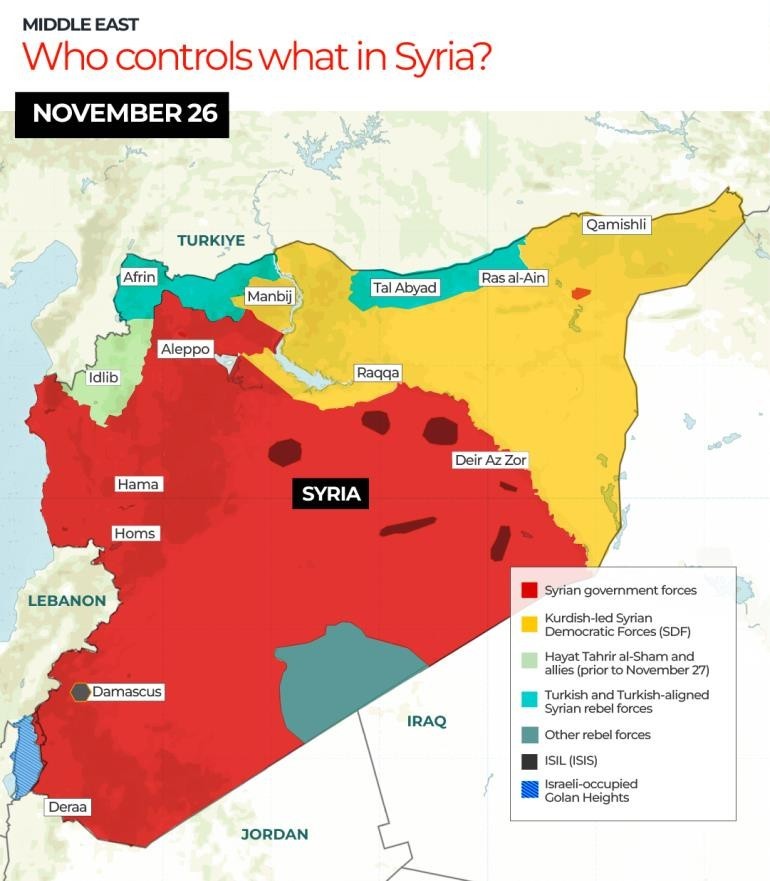 |
| Day 1 – November 27 |
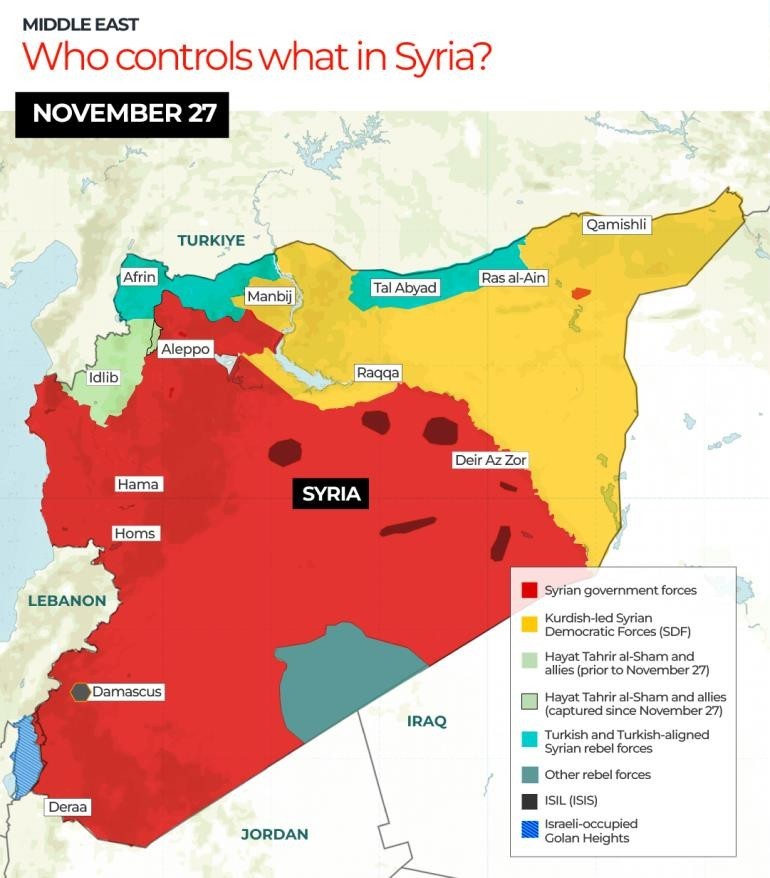 |
| Day 2 – November 28 |
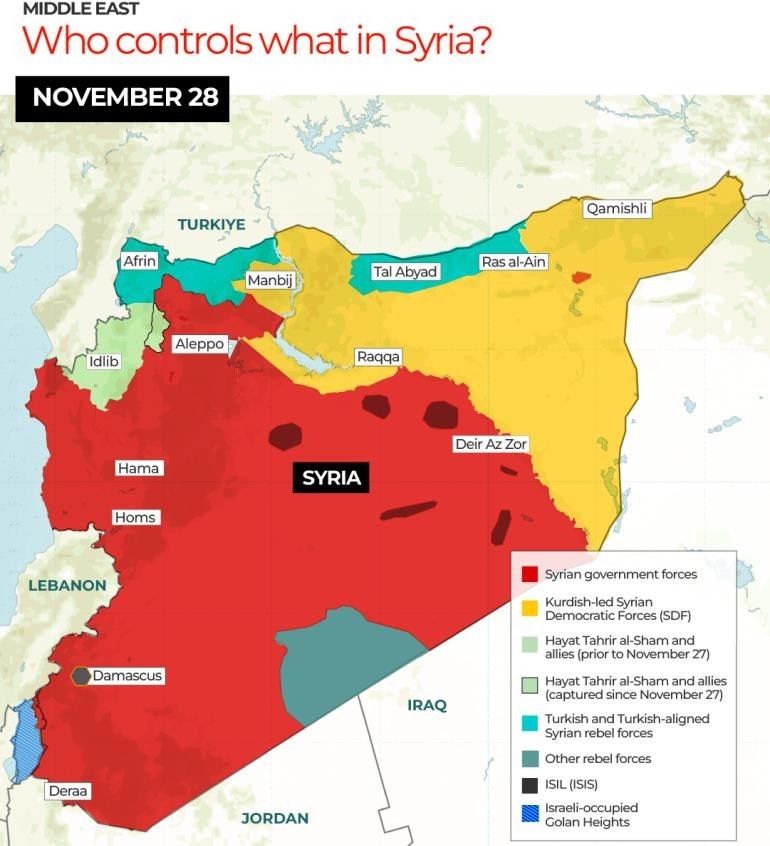 |
| Day 3 – November 29 |
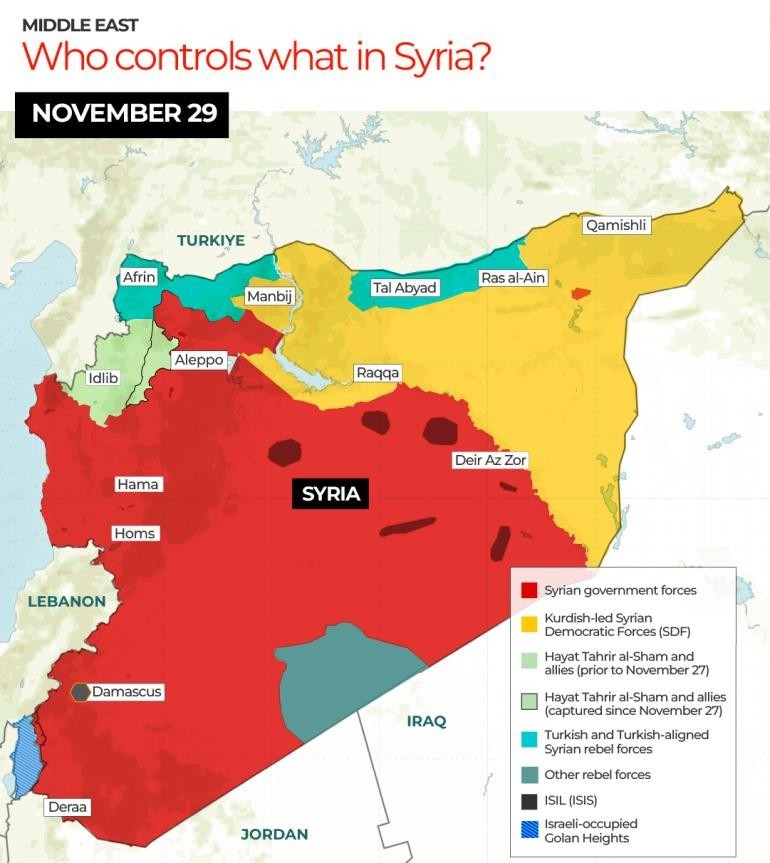 |
| Day 4 – November 30 |
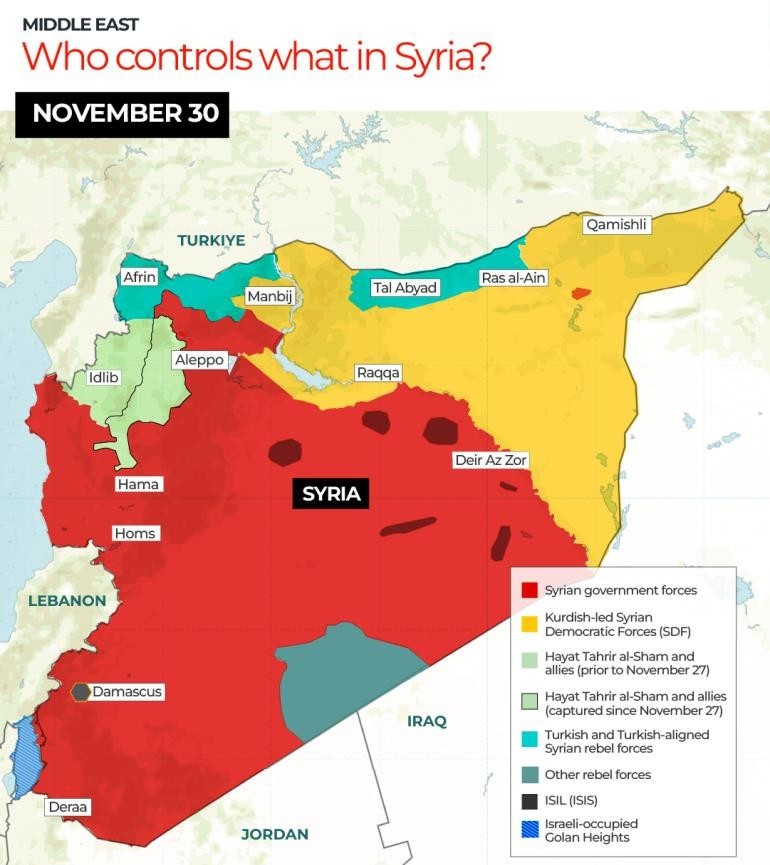 |
| Day 5 – December 1 |
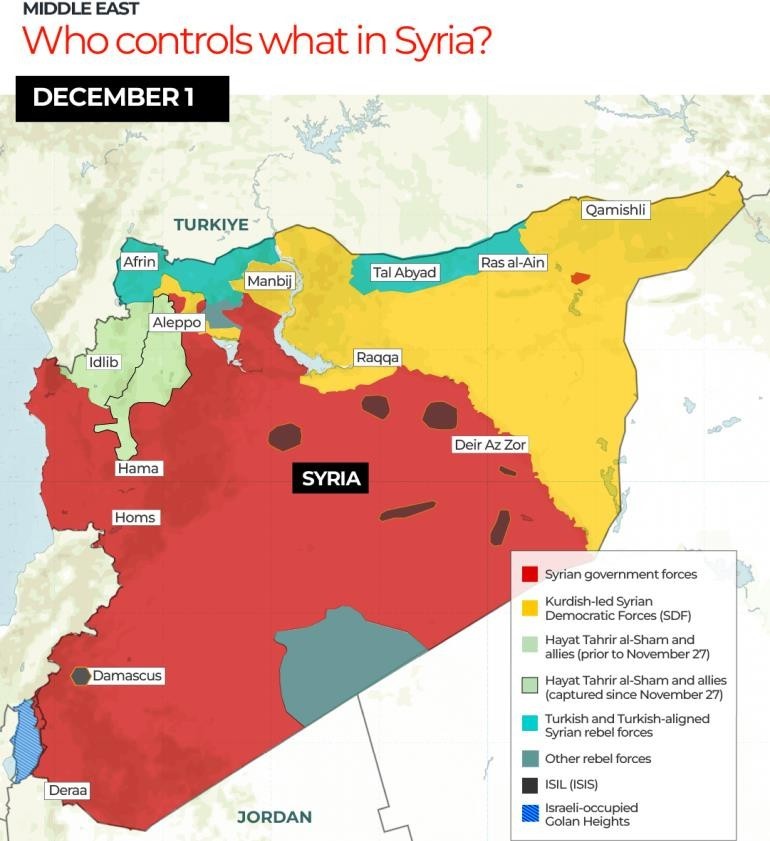 |
| Day 6 – December 2 |
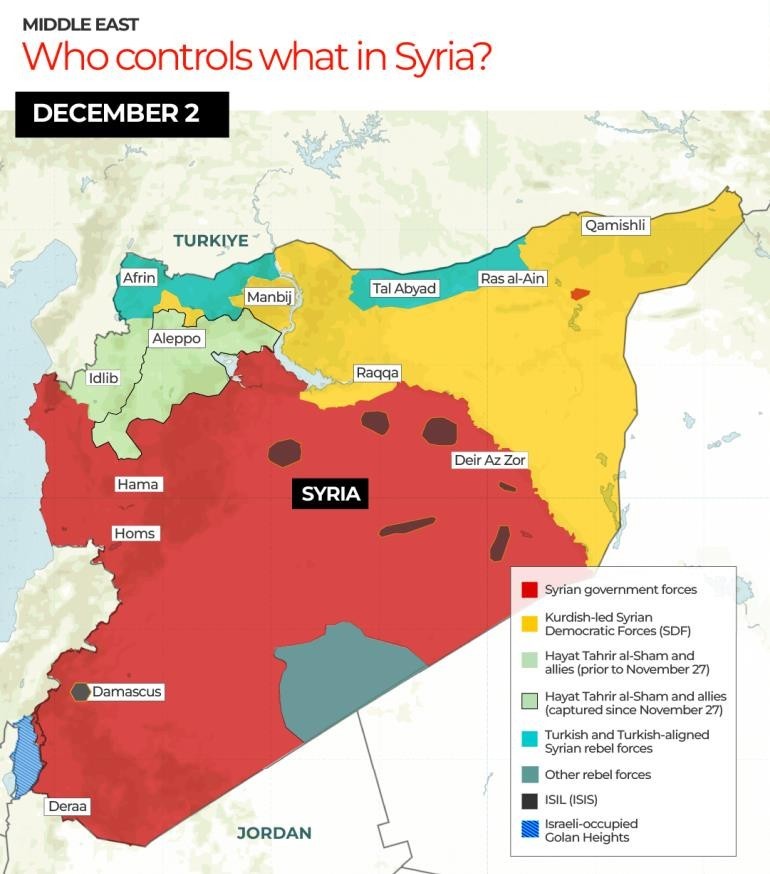 |
| Day 7 – December 3 |
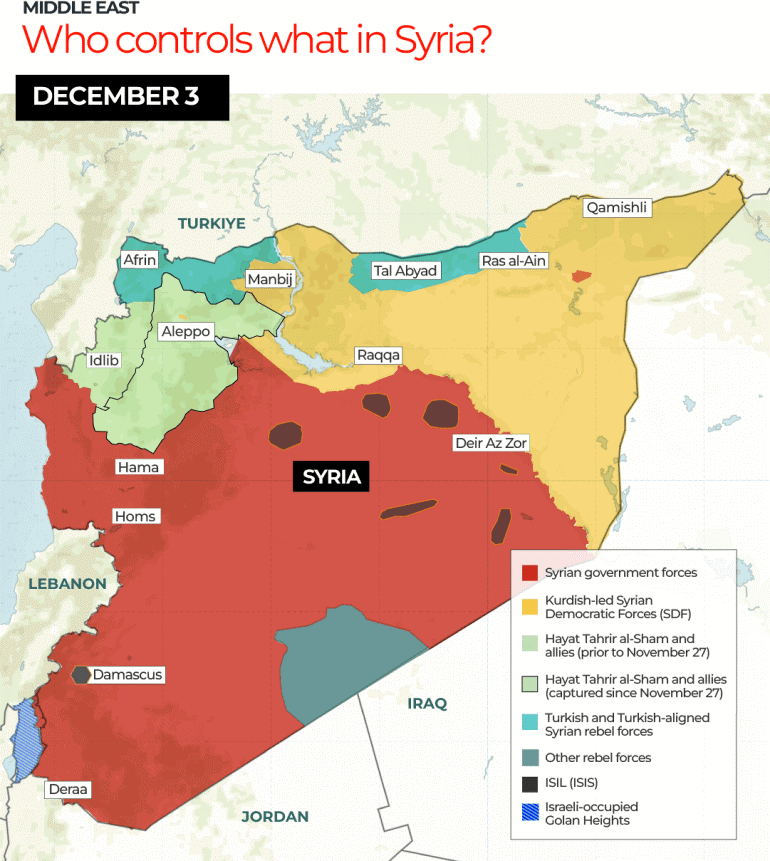 |
| Day 8 – December 4 |
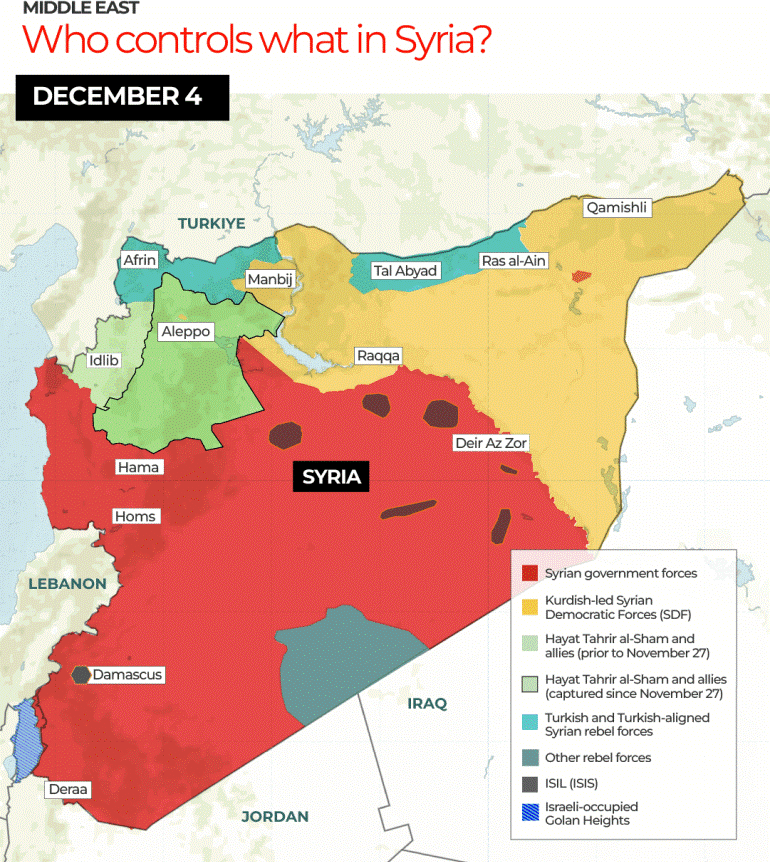 |
| Day 9 - December 5 |
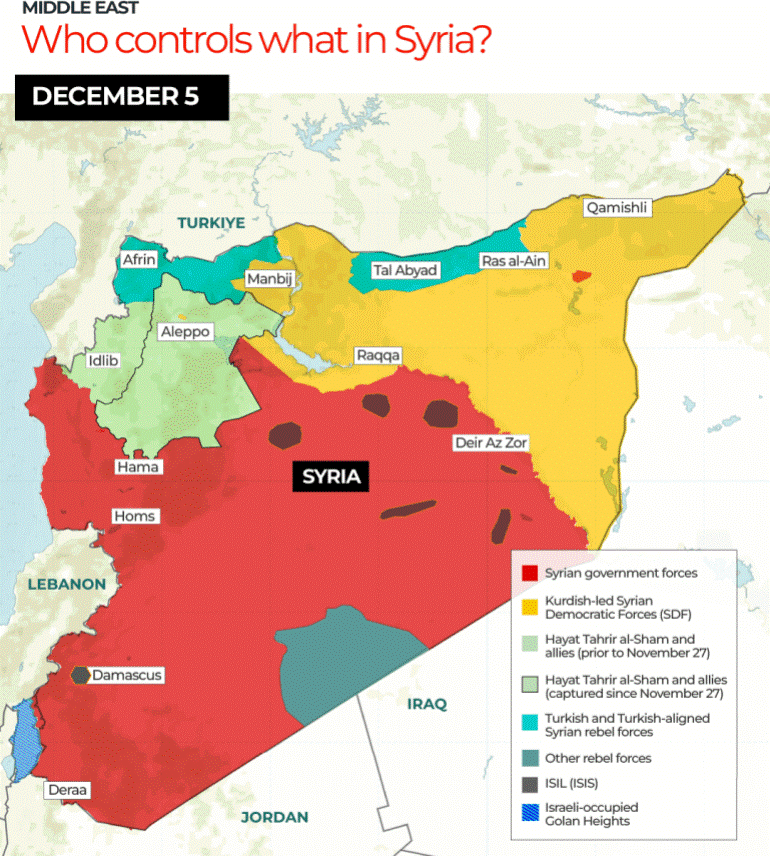 |
| Day 10 - December 6 |
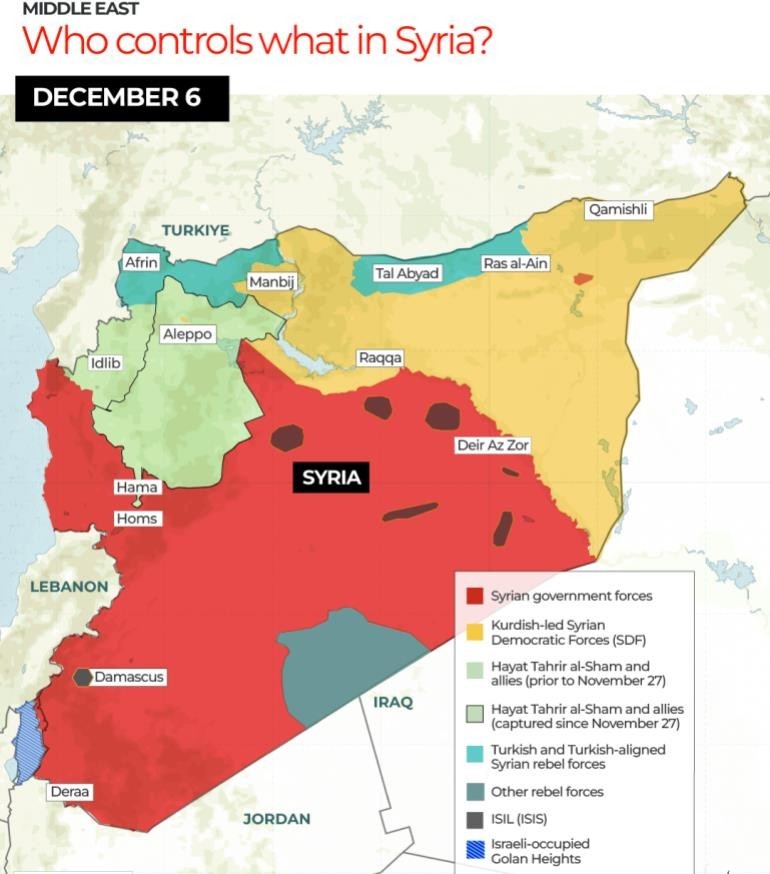 |
| Day 11 – December 7 |
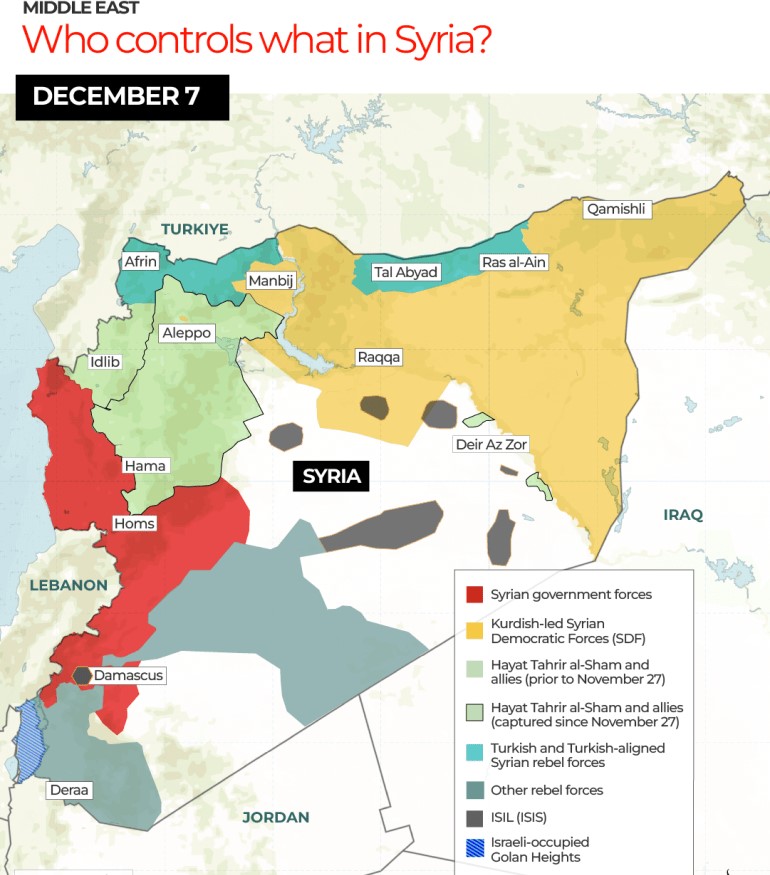 |
4.
What are the reasons for the fall of Assad’s regime?
| Reasons | Analysis |
|---|---|
| Shift in Regional Security Dynamics |
Russia:
|
Hezbollah:
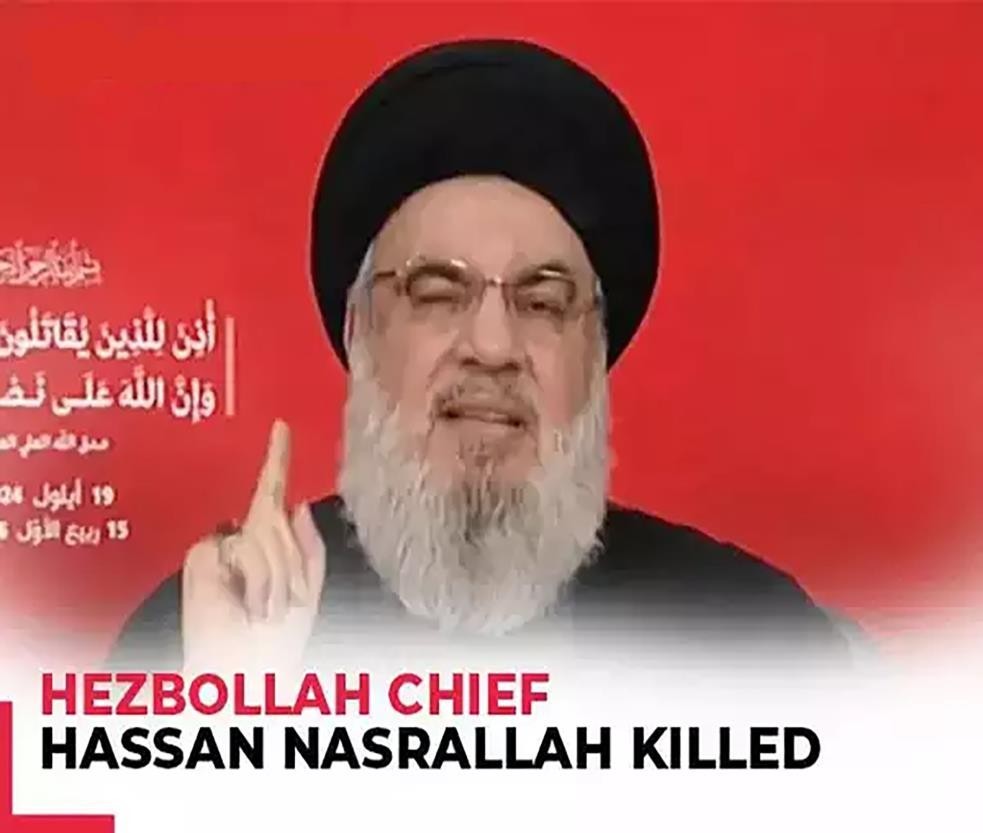 |
|
Turkey:
|
|
Iran:
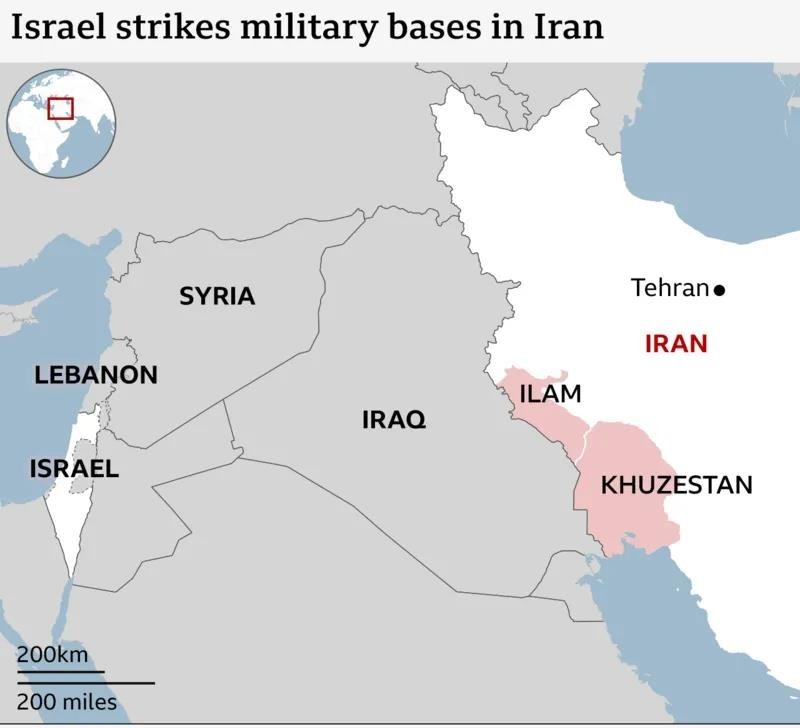 |
|
| Economic Pressures |
|
| Rebel forces |
|
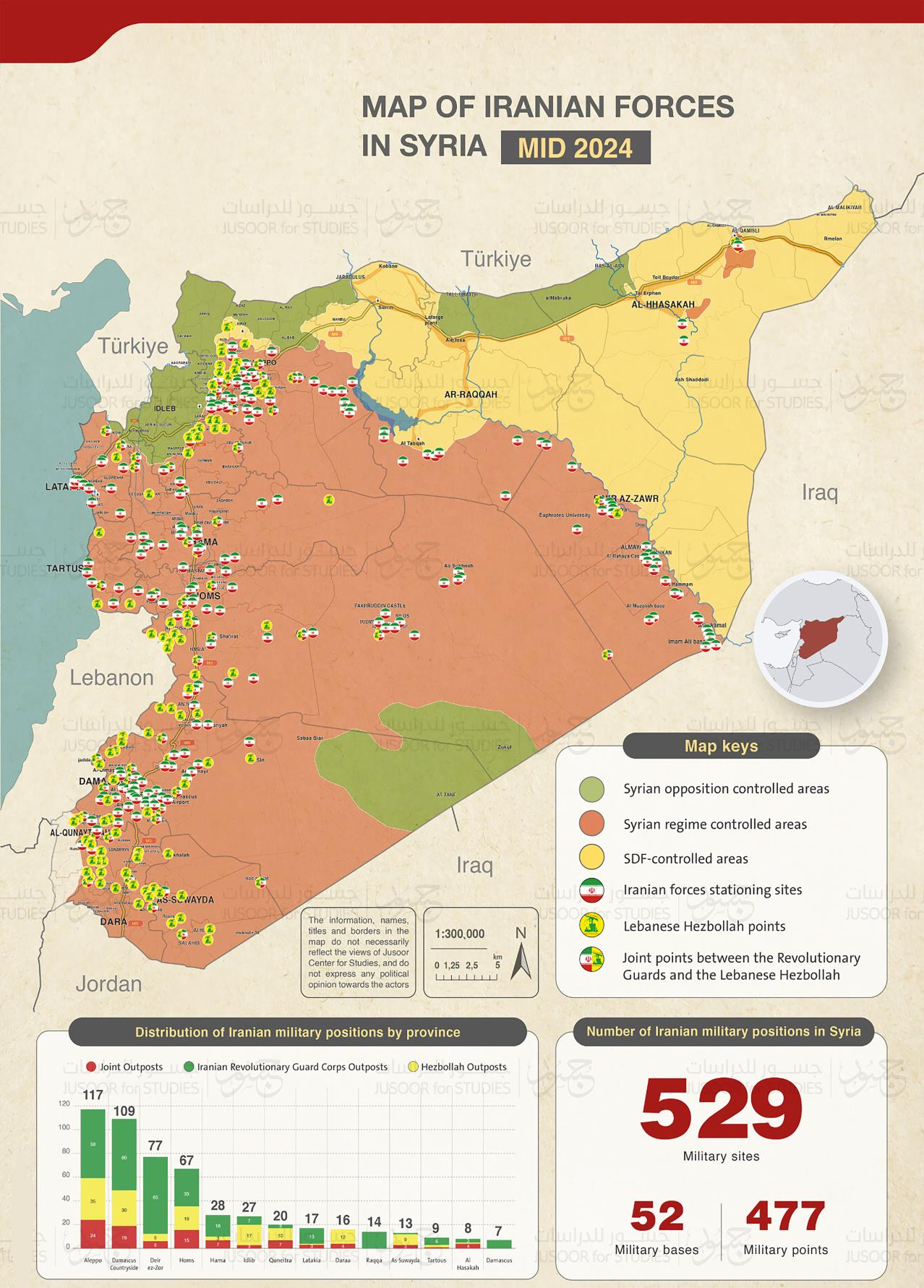
5.
Who controls Idlib now?
- Since the province fell to opposition forces, there is no one group that controls Idlib, but rather, several separate factions.
- International watchdogs say that the dominant faction in Idlib is the Hayat Tahrir al-Sham (HTS), a UN-designated terrorist organization set up in 2017, with links to al-Qaeda.
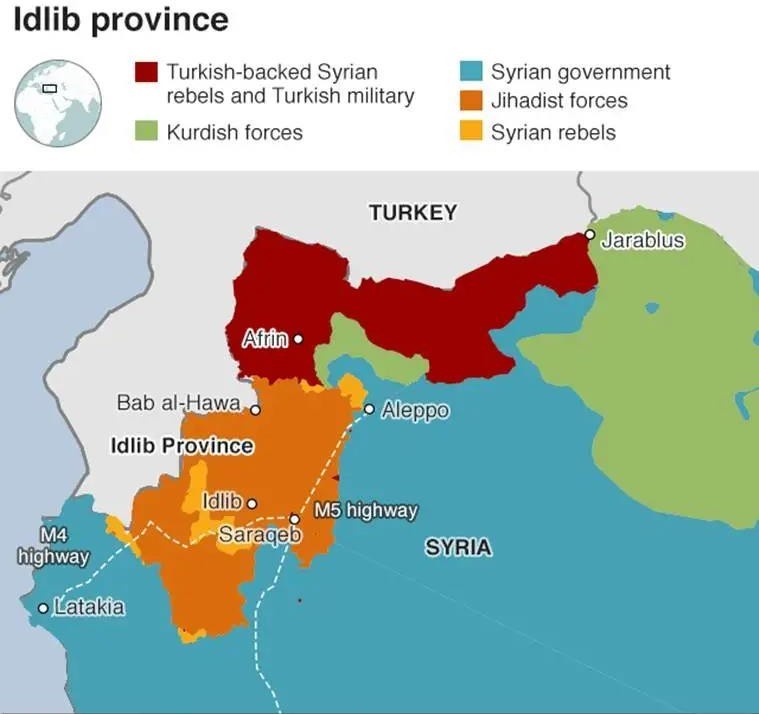
6.
Why is Idlib important?
- During the uprising since 2011, Idlib was the focus of protests and fighting in the early phase of the Syrian war.
- As the uprising descended into armed conflict, Idlib became the focus of a rebel campaign, which temporarily captured the city and the governorate before a government offensive in April 2012.
- The province along with parts of Hama, Latakia and Aleppo is the last stronghold of the rebel and jihadist groups that have been trying to overthrow President Assad since 2011.
- Idlib is also strategically important to the government.
- It borders Turkey to the north and straddles highways running south from the city of Aleppo to the capital Damascus, and west to the Mediterranean city of Latakia.
7.
Why did Syrian government forces target Idlib now?
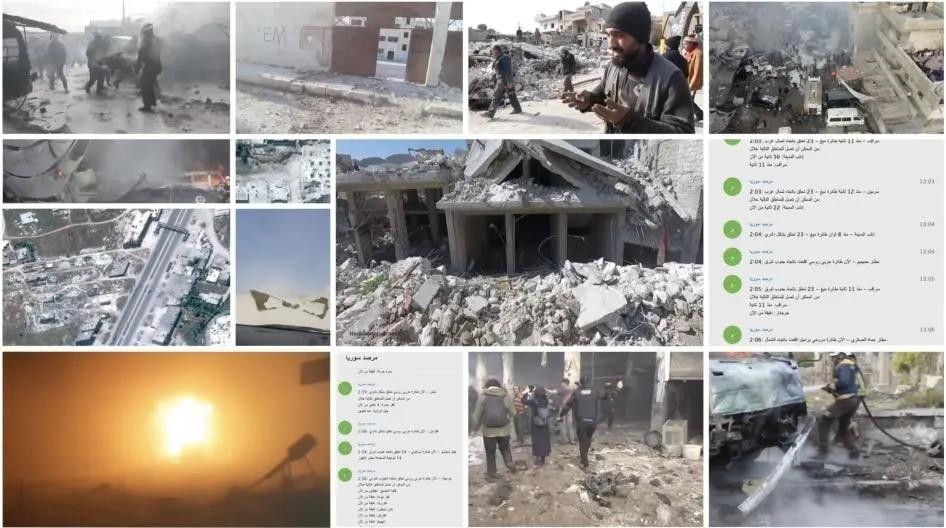
- In 2017, Russia and Turkey agreed to de-escalation in Idlib and the province remains one of the last out of the control of the Syrian government.
- When Syrian government forces overtook three other deescalation zones elsewhere in Syria, Turkey approached Russia in 2018 with a proposal to establish a demilitarized zone in Idlib, in what came to be known as the Sochi accord.
- Turkey also proposed that it would disarm the Sunni militant group Hayat Tahrir al-Sham and remove it from the area, and agreed to reopen the crucial M4 and M5 highways.
- However, the situation escalated when Turkey failed to deal with Hayat Tahrir al-Sham according to the terms of the proposal with Russia.
- Months of fighting followed, devastating towns and displacing thousands of people.
- Syrian government forces also recaptured the M4 and M5 highways.
- Idlib’s strategic location has also made it a target for Syrian government forces.
8.
Why is Idlib important for Turkey?
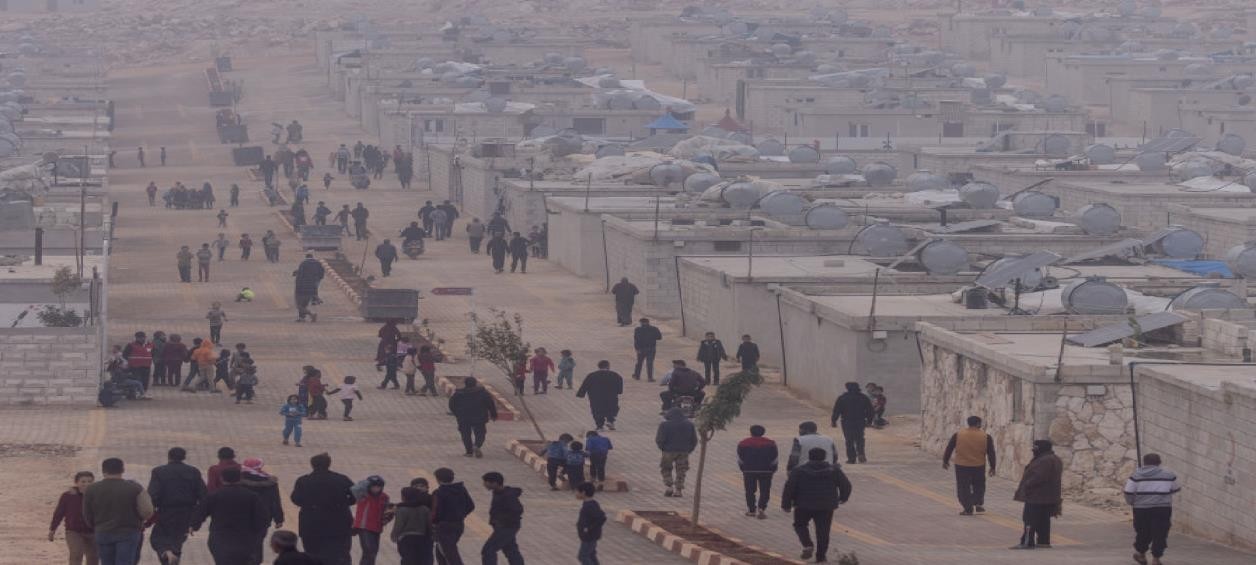
- Idlib‟s proximity to the Turkish border makes it not only important for the Syrian government, but also a cause of concern for Turkey.
- Since the war started in Syria, thousands of displaced Syrians have sought refuge in Turkey over the years.
- According to the latest known figures, Turkey presently hosts some 3.6 million refugees and is feeling the socio-economic and political strain of their presence in the country.
- More conflict in Idlib would only serve to displace more people, pushing them towards the Turkish border.
- Turkey has been witnessing a surge in hostility among its citizens towards refugees and a fresh wave of refugees will only exacerbate the situation.
9.
What is Hayat Tahrir al-Sham (HTS)?
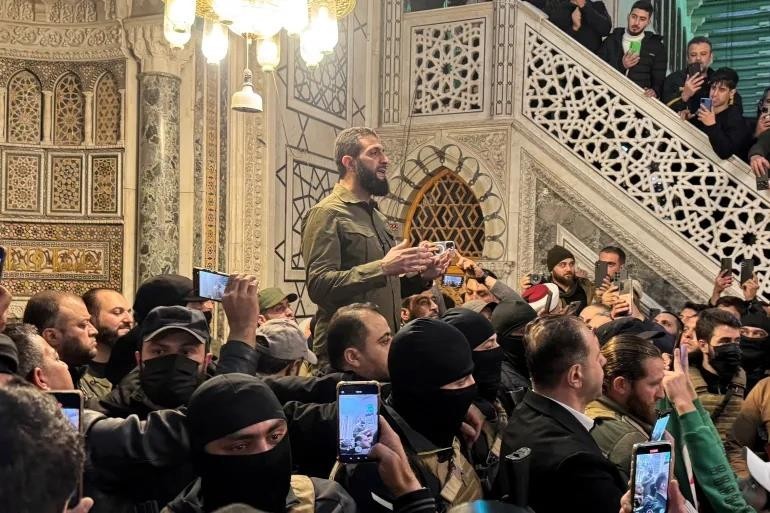
- The HTS (Hayat Tahrir al-Sham) is led by Abu Mohammad alJoulani, a 42-year-old Syrian militant.
- Joulani had moved to Iraq in his early 20s to fight the American occupation of the country (2003) and joined al-Qaeda.
- When al-Qaeda in Iraq was commanded by Abu Bakr alBaghdadi, Joulani emerged as one of his close lieutenants. When Baghdadi decided to send a contingent of al-Qaeda jihadists across the border to Syria to fight President Assad after the civil war broke out, he chose Joulani to lead the pack.
- Later, Joulani fell out with Baghdadi as the former wanted alNusra to join the Islamic State.
- Joulani wanted to retain his group as an autonomous al-Qaeda branch in Syria.
- When the world’s focus shifted towards the Islamic State, Joulani steadily built his empire in Idlib.
- The Islamic State was defeated and Baghdadi was killed, but Joulani emerged as the face of anti-regime Syrian militancy.
- He first changed the name of al-Nusra to Jabhat Fateh al-Sham and later, the name was changed again to Hayat Tahrir al-Sham (HTS) as he sought to distance his group from al-Qaeda–though the HTS never renounced its Islamist ideology.
- Rebels and jihadists who lost territories elsewhere flocked towards Idlib as it offered refuge to all of them.
- Over the years, Joulani‟s men built a parallel state in Idlib.
- Joulani is a U.S.-designated terrorist, but, after establishing his rule over Idlib, he declared that his fight was against Mr. Assad, not against the U.S.
- He has not faced any major attacks from the U.S., which still has hundreds of soldiers in eastern Syria.
10.
Can Hayat Tahrir al-Sham (HTS) bring stability to Syria?
- Hayat Tahrir al-Sham, originally linked to Al-Qaeda, led the offensive against Assad but now faces challenges in governance and legitimacy amidst Syria's long-standing instability.
- In the wake of recent events, Syrian Prime Minister Mohammad Ghazi al-Jalali has pledged full cooperation with the leadership the Syrian people will select.
- HTS remains a hardline organization, but experts argue that there have been attempts to operationalise a civilian government.
- Since 2016, Julani has been positioning himself and his group as credible caretakers of a Syria liberated from Assad.
- While HTS seeks to establish legitimacy, it faces significant challenges, including human rights violations committed by its members and ongoing conflicts with other groups.
11.
What will be the impact of the recent regime change in Syria?
- The dramatic toppling of the Syrian regime at the hands of rebel forces this weekend could have deep ramifications not only for the Middle Eastern country, but on global geopolitics and markets too, according to analysts.
| Countries | Impact |
|---|---|
| USA |
|
| Turkey |
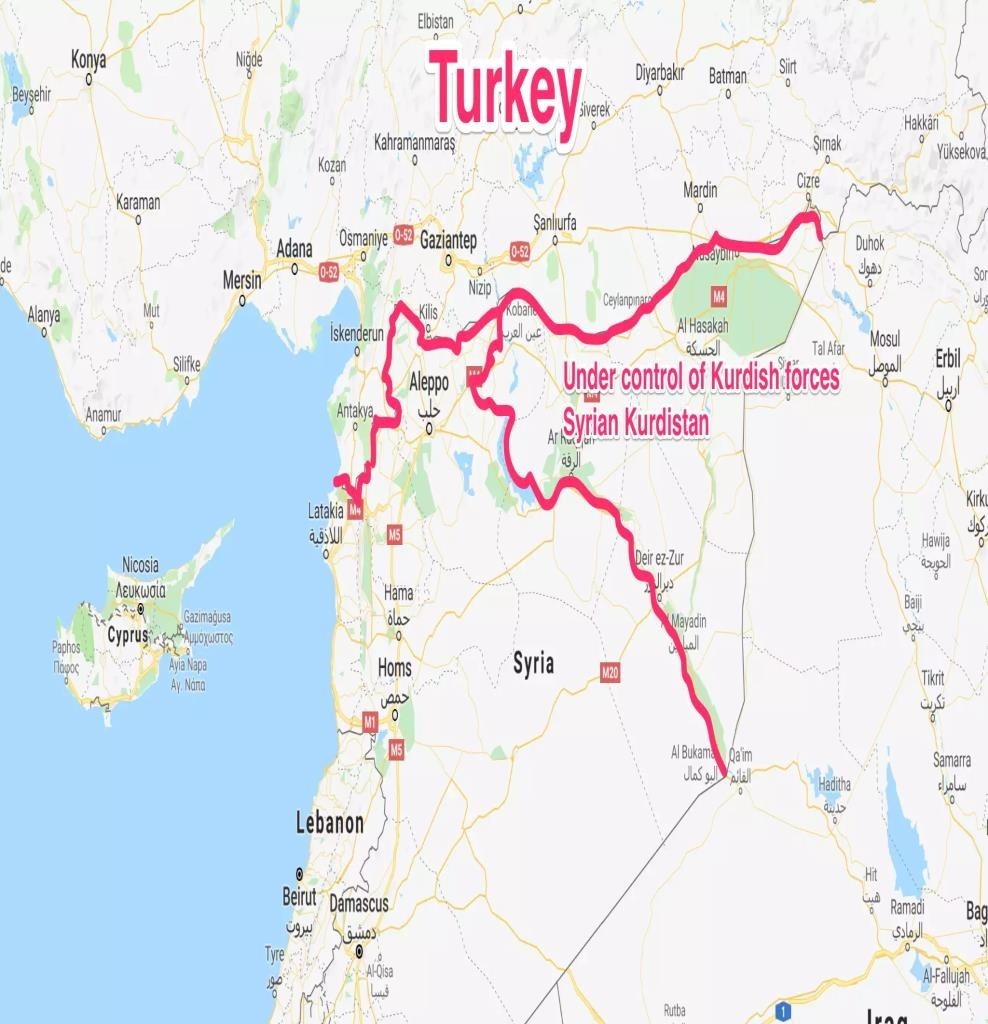

|
| Israel |
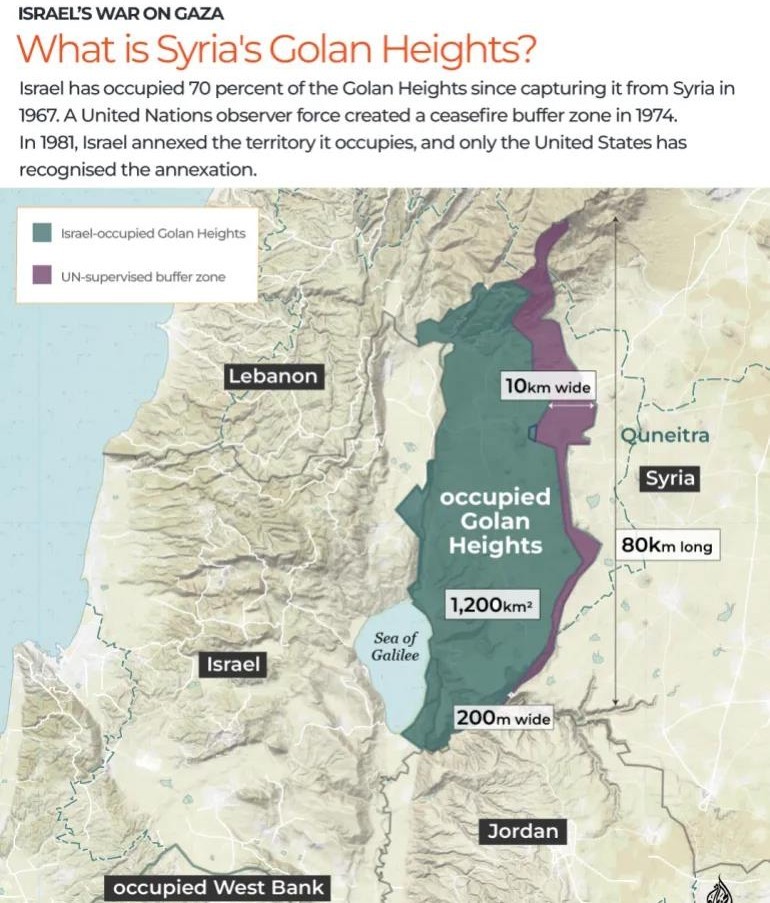 |
| Russia |
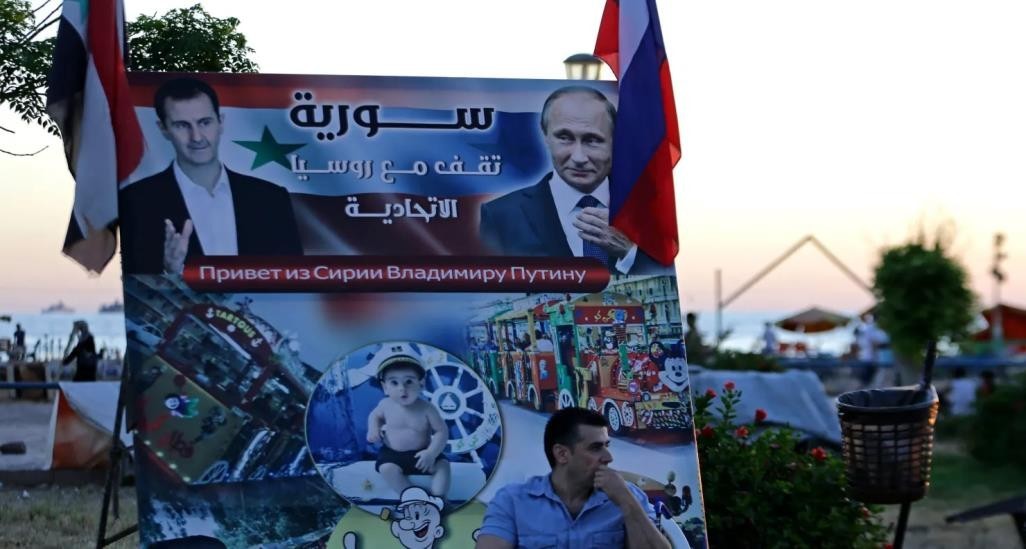 |
| Iran |
|
12.
What is the timeline of the Syria crisis?
- The sudden collapse of Bashar al-Assad's rule over Syria marks the culmination of a nearly 14-year rebellion and a key moment in a civil war that killed hundreds of thousands of people, displaced half the population and drew in outside powers.
- The first protests against Bashar Assad in 2011 quickly spread across Syria and were met by security forces with a wave of arrests and shootings.
| Year | Event |
|---|---|
| 2011 |
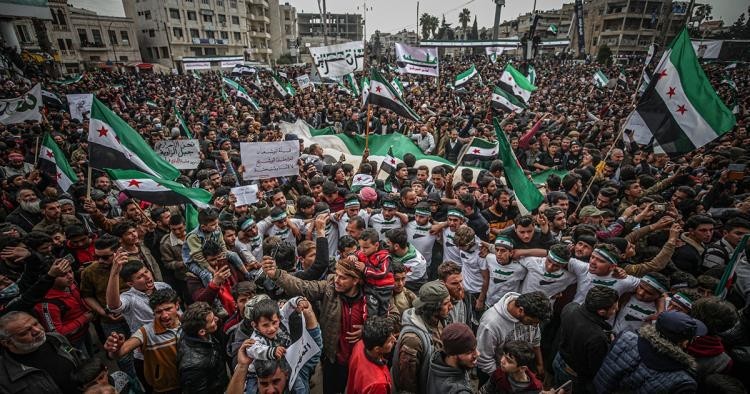 |
| 2012 |
|
| 2013 |
|
| 2014 |
|
| 2015 |
|
| 2016 |
|
| 2017 |
|
| 2018 |
|
| 2019 |
|
| 2020 |
|
| 2023 |
|
| 2024 |
|
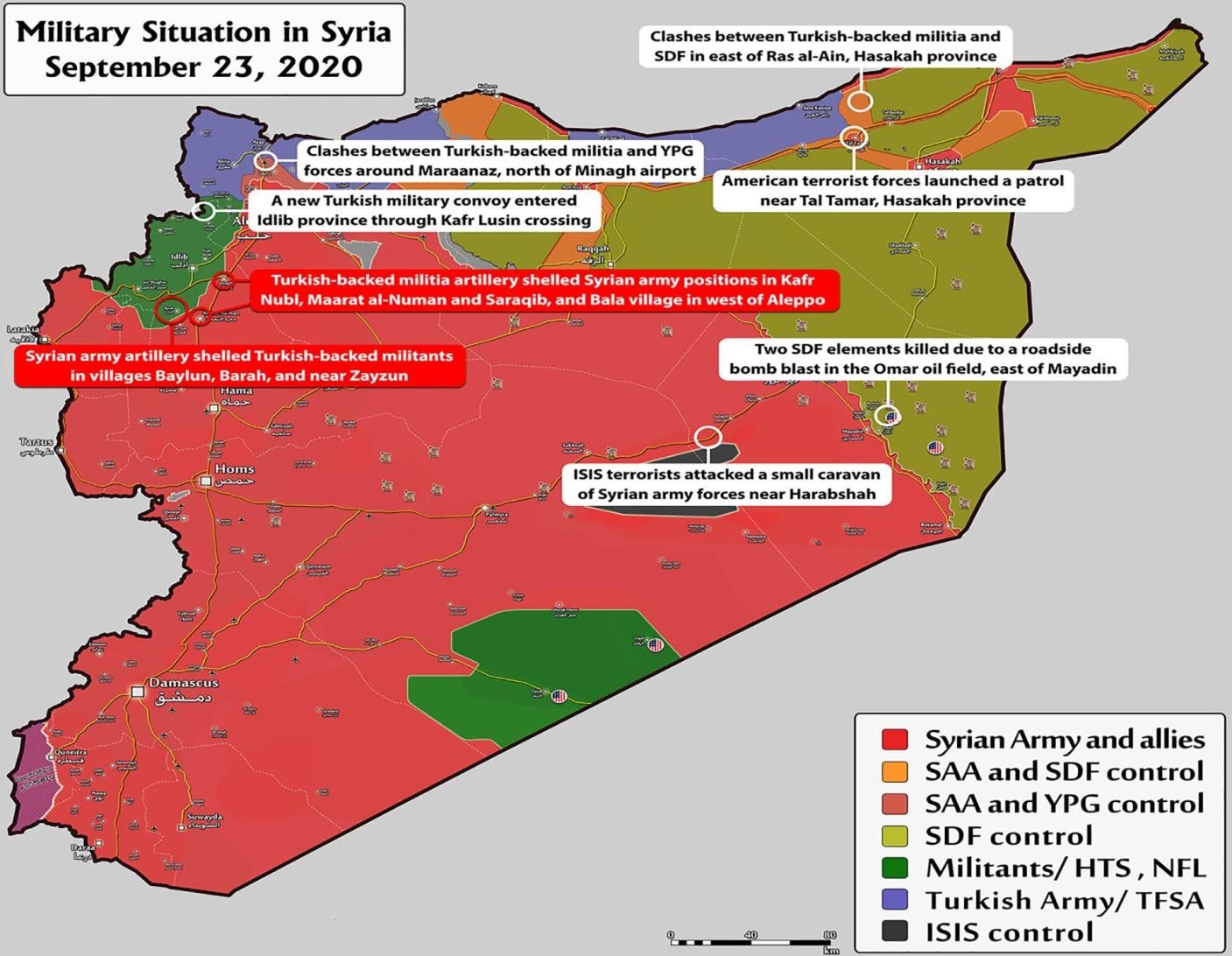
13.
What were the reasons for the Syrian civil war?
- In March 2011, pro-democracy demonstrations erupted in the southern city of Deraa, inspired by uprisings in neighbouring countries against oppressive rulers.
| Reasons | Analysis |
|---|---|
| Unemployment |
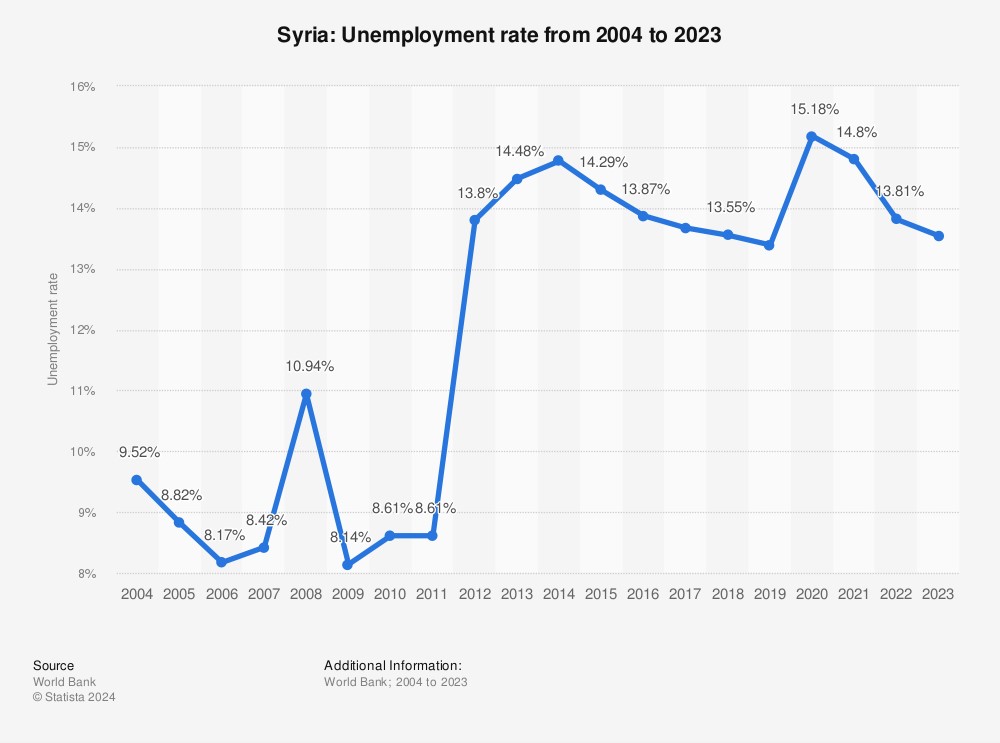 |
| Poverty |
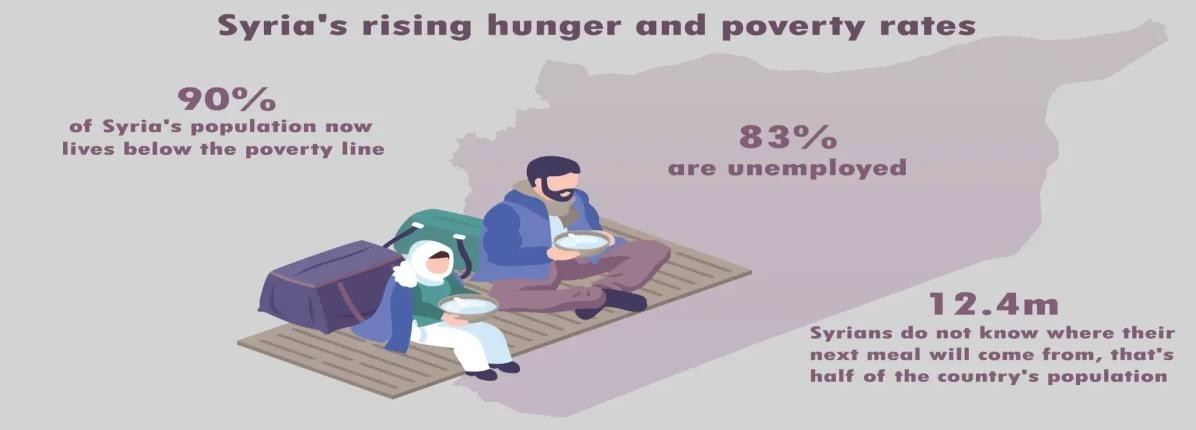 |
| Drought |
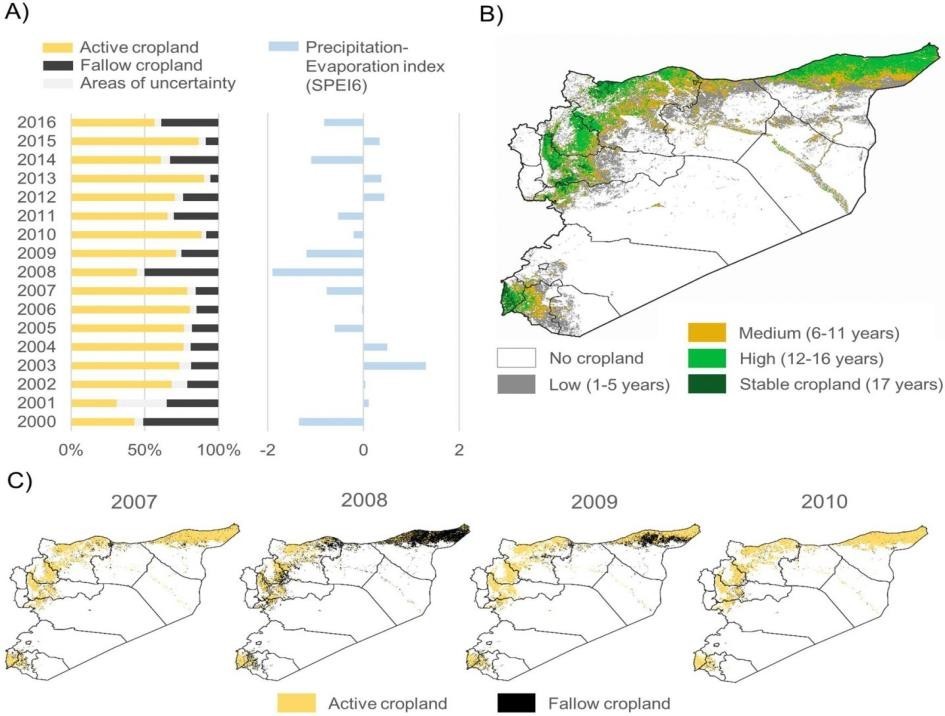 |
| Corruption |
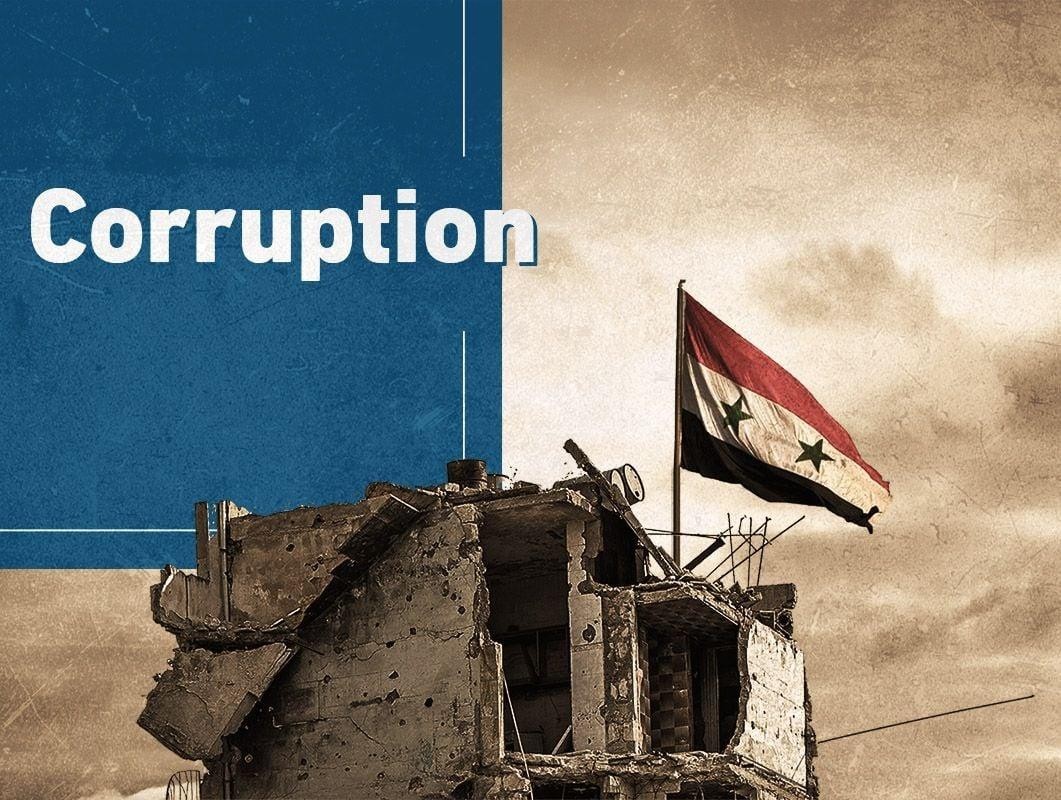 |
| Lack of democracy |
|
| Arab spring |
|
| Increase in State repression |
 |
| Iran's interference in Syria affairs |
|
14.
Enlist key players and their role in the Syrian civil war?
- The key players involved in the Syrian civil war are as follows:
| Reasons | Role played |
|---|---|
| Assad regime / Syrian government |
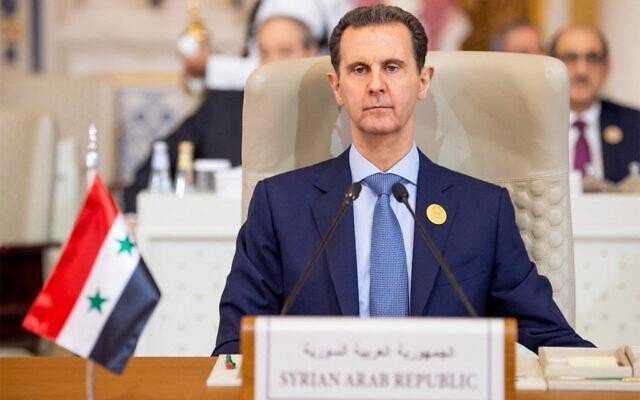 |
| Iran |
|
| Kurds |
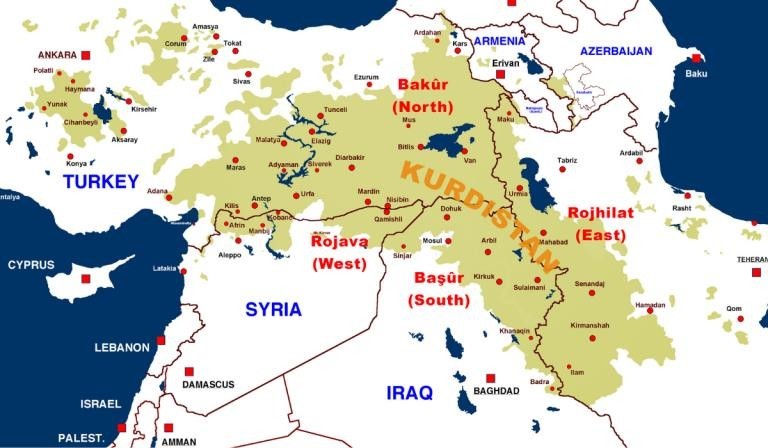 |
| Hezbollah |
|
| ISIS |
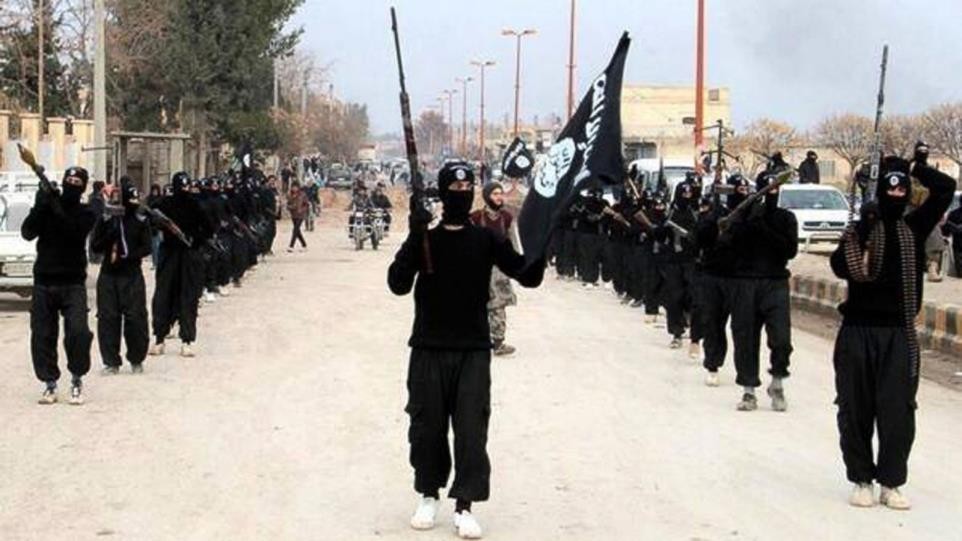 |
| Syrian opposition / rebels |
|
| Gulf states |
|
| Jordan |
|
| Turkey |
|
| United States |
|
| Russia |
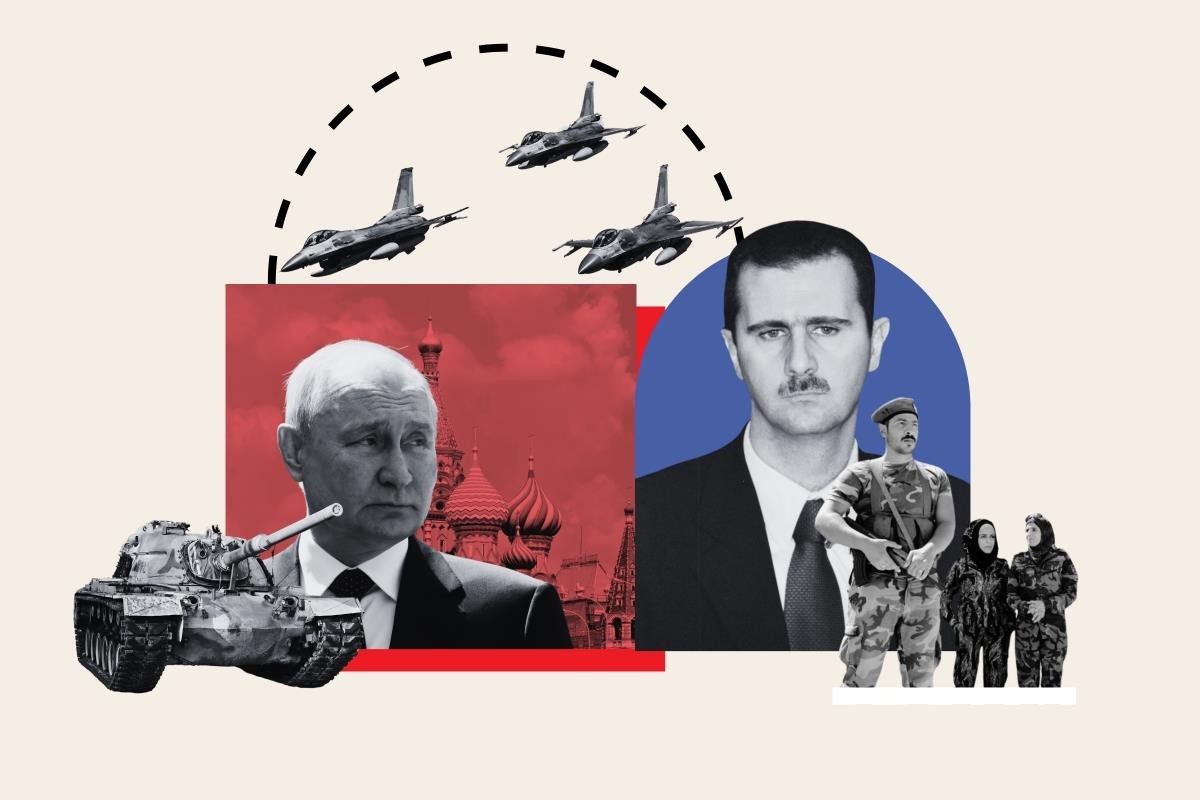 |
15.
Why have peace talks failed?
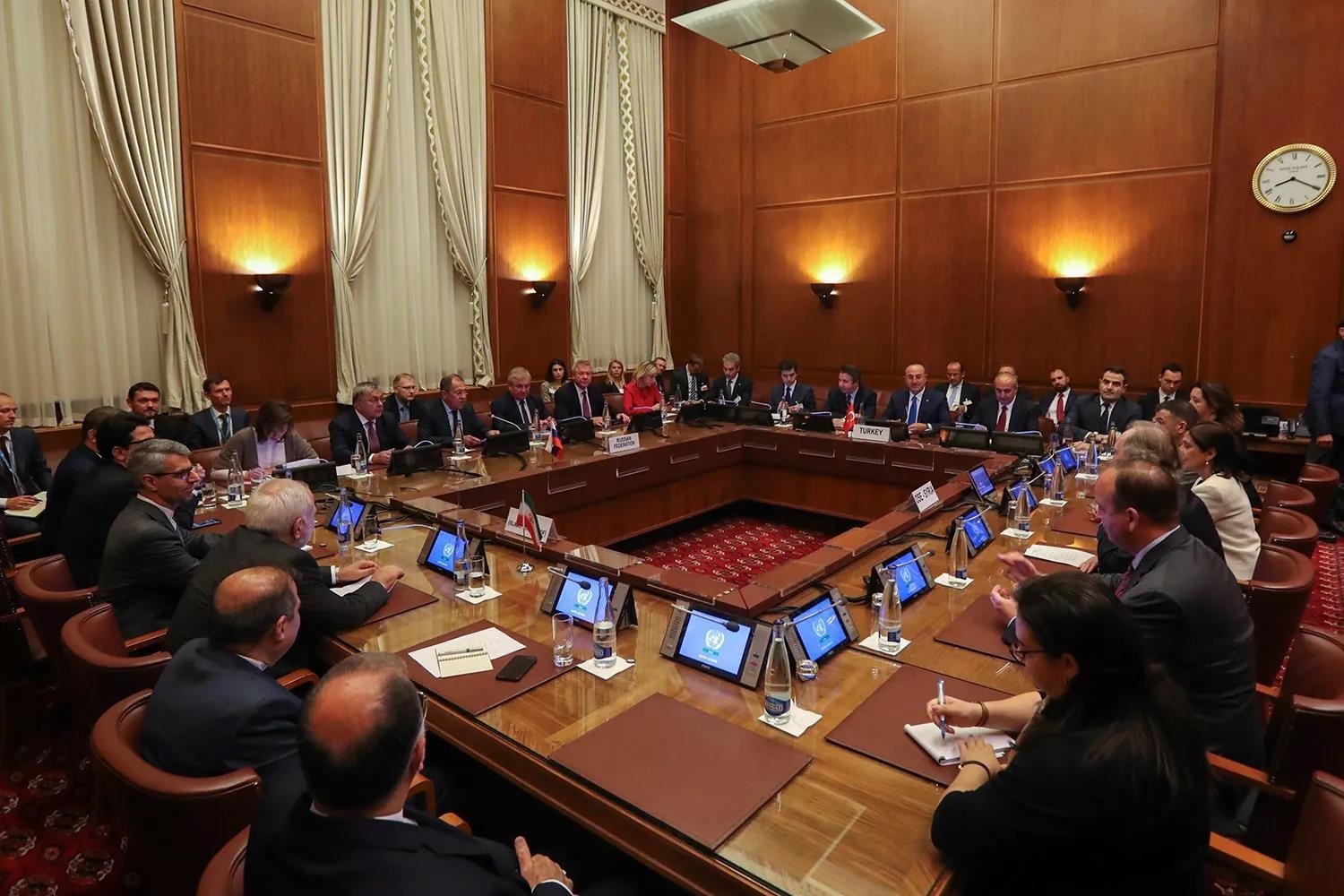
- Many peace negotiations have taken place over the years, but they have failed.
| Peace talk | Analysis |
|---|---|
| 2012: The first peace talks |
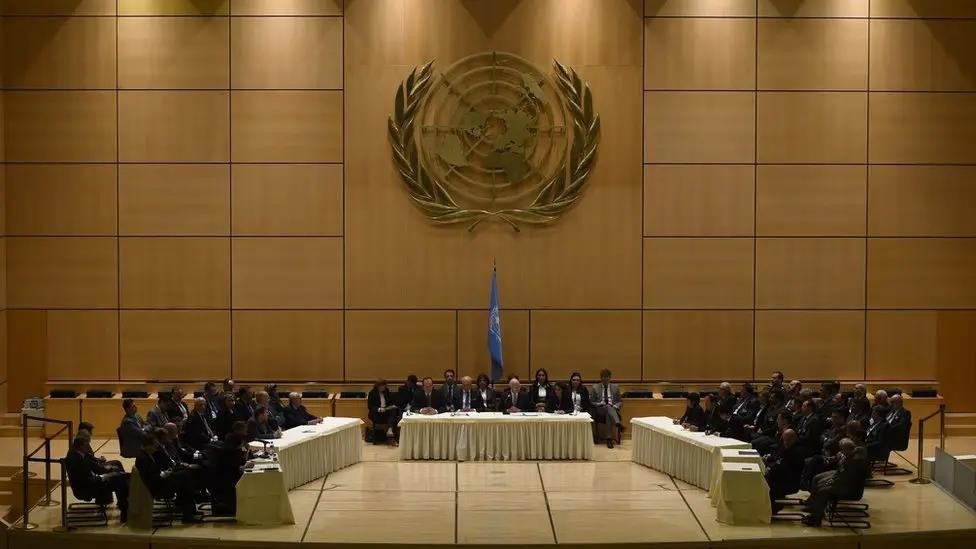 |
| 2016: A second attempt in Astana |
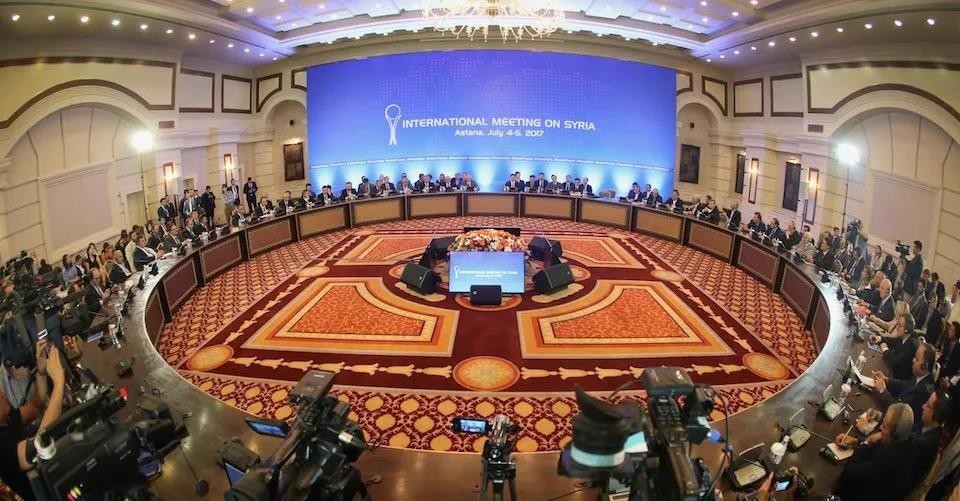 |
| 2018: New talks in Sochi |
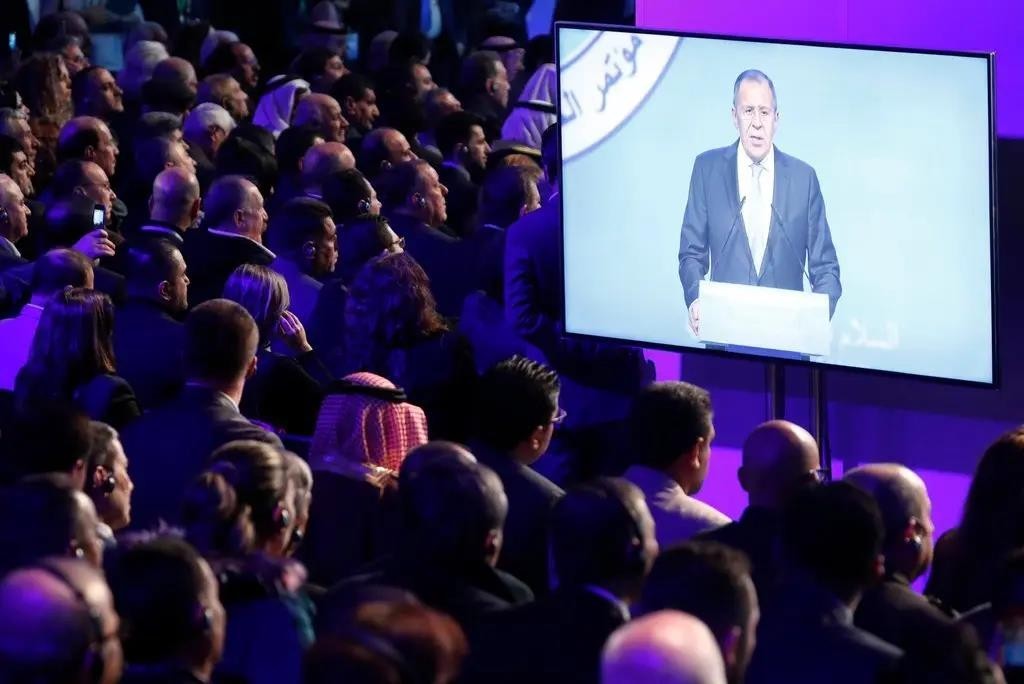 |
| 2020: A ceasefire |
|
16.
Highlight the refugee crisis in Syria due to the civil war?
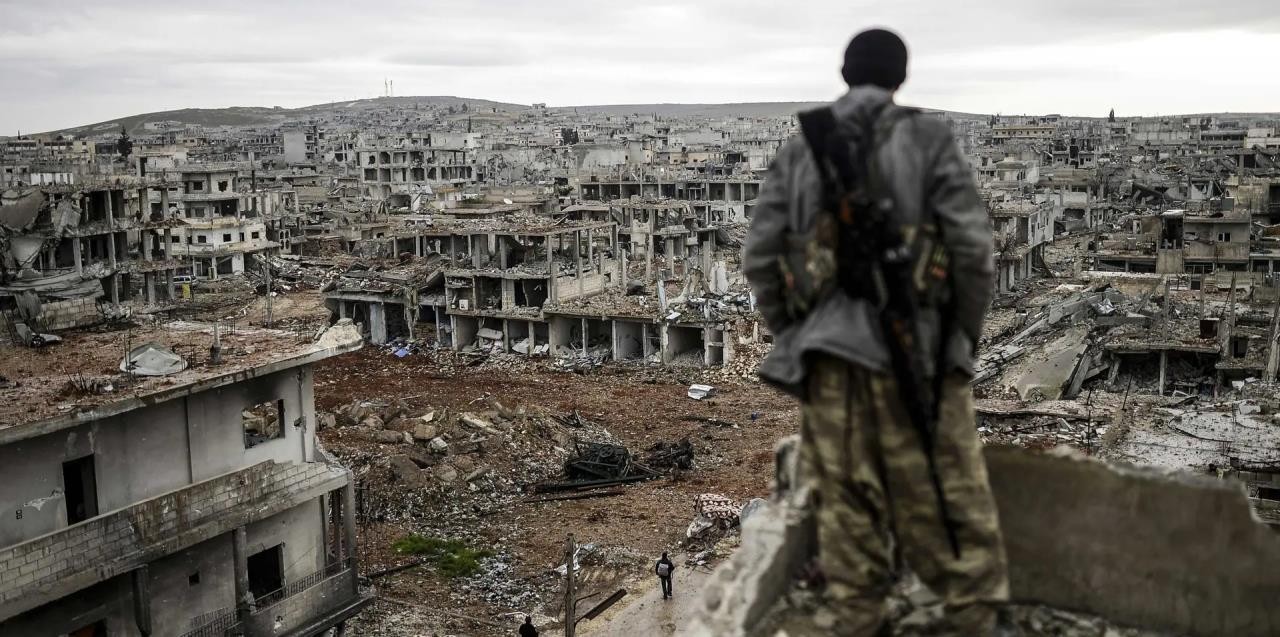
- Experts estimate that 13.1 million Syrians need humanitarian assistance, such as medicine or food.
- Nearly 3 million of these people live in hard-to-reach areas.
- More than 5.6 million refugees have fled the country, and another 6.1 million are displaced within Syria.
- Turkey, Lebanon and Jordan are credited with hosting the most Syrian refugees.
- The majority of Syrian refugees have stayed in the Middle East.
- Syria’s neighbours, Lebanon, Jordan and Turkey are hosting over 90% of the refugees.
- Other families have fled to neighbouring Iraq, Egypt or North Africa.
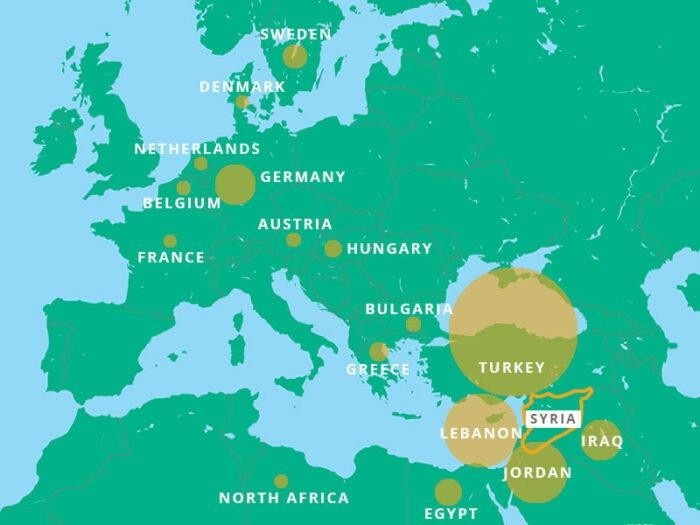
17.
What is the history of India-Syria relations?
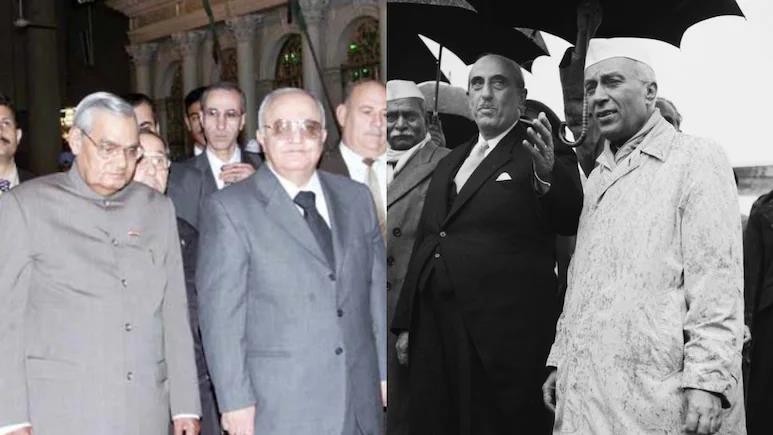
- In 1957, Prime Minister Jawaharlal Nehru made a pit stop at the Syrian capital Damascus, on his way to the United States.
- India and Syria had established diplomatic relations seven years earlier, and to mark that friendship, a street in Damascus' historic Ummayad Square was named 'Jawaharlal Nehru Street'.
| Aspects of relation | Analysis |
|---|---|
| Shared Principles |
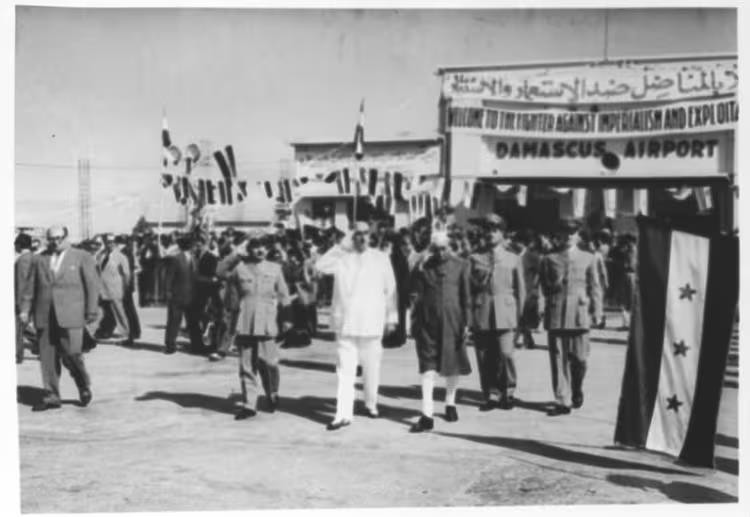 |
| India's Diplomatic Stance |
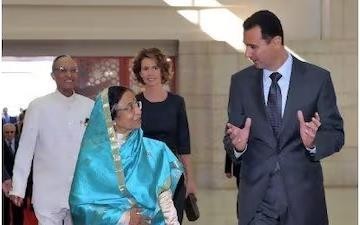 |
| Economic And Cultural Ties |
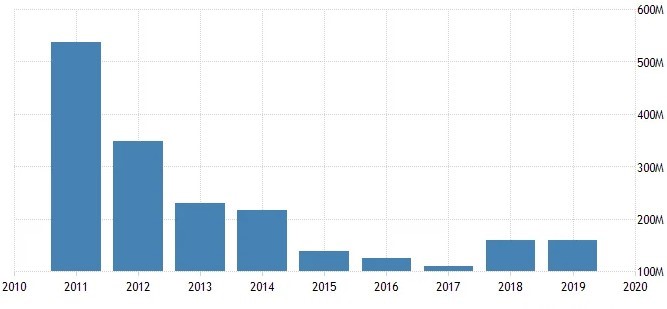 |
| Countering Pakistan' |
|
18.
What did Assad's fall mean for India?
- From Syria's support for India on the Kashmir issue to Delhi's backing of Syria's claim over the Israeli-occupied Golan Heights, Delhi and Damascus have been partners.
- The fall of the Bashar al-Assad regime could have far-reaching implications for India.
| Aspects | Implications |
|---|---|
| Bilateral relations |
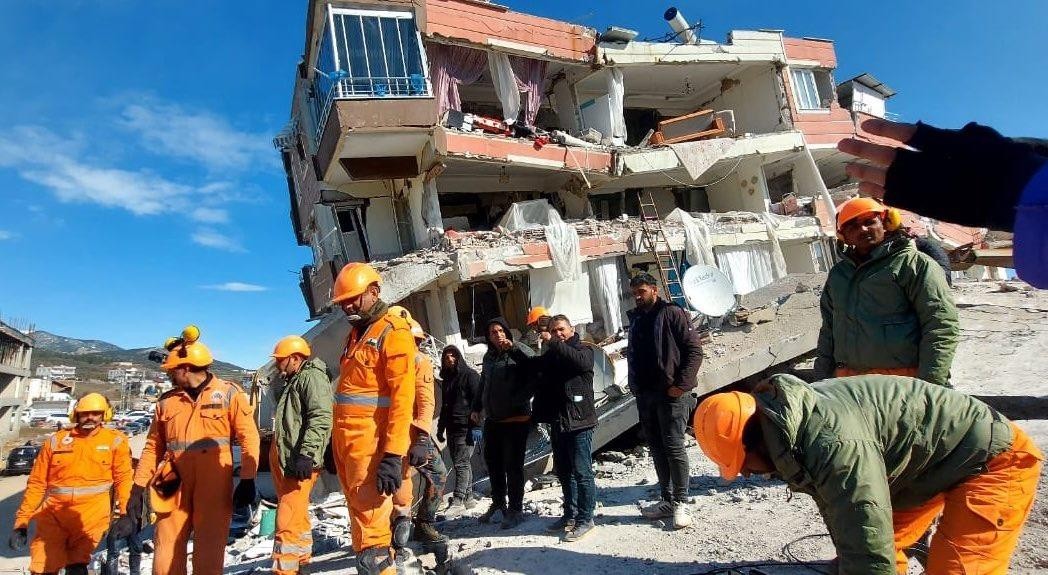
|
| Rise in terrorism |
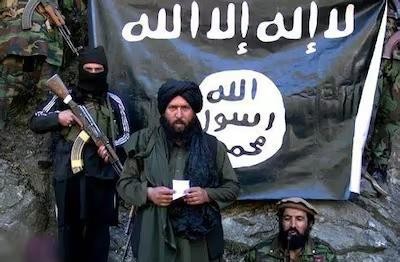 |
| India‟s investment in syria |
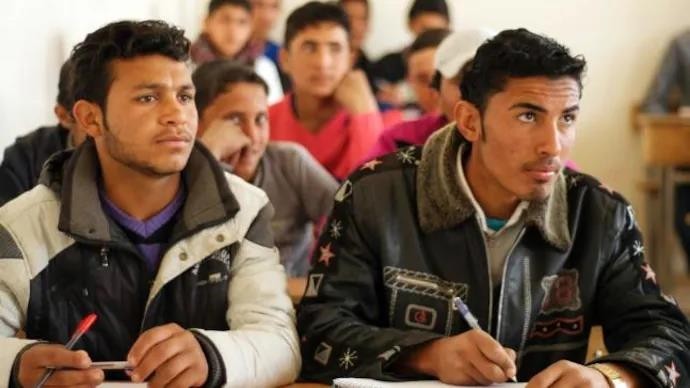
|
19.
Will Assad's fall hurt India on the Kashmir issue?
- Falling of the Bashar-al Assad regime in Syria may come as a setback for India, especially on the Kashmir issue.
- The Syrian President and his late father had backed India‟s position on Kashmir for decades.
- Unlike other Islamic nations that have backed Pakistan on the Kashmir question, Syria has been steadfast in its support of India, asserting that India has a right to resolve the Kashmir issue in “any manner” and “without external assistance.”
- Syria had limited ties with Pakistan and supported India‟s stance on multilateral platforms.
- Syria described India‟s revocation of Article 370 as India‟s internal matter.
- India will be worried about the position that the post-Assad dispensation will take on Kashmir.
- The HTS is backed by Turkiye, which is close to Pakistan and If the new regime comprises the HTS it may not take India‟s side on India-Pakistan issues.
- The HTS‟ victory over the Russia and Iran-backed Assad could similarly boost Islamist militants not just in the immediate region but beyond in South Asia.
- Already Jammu and Kashmir is witnessing a surge in militancy.
20.
What is India’s take on the Syrian crisis?
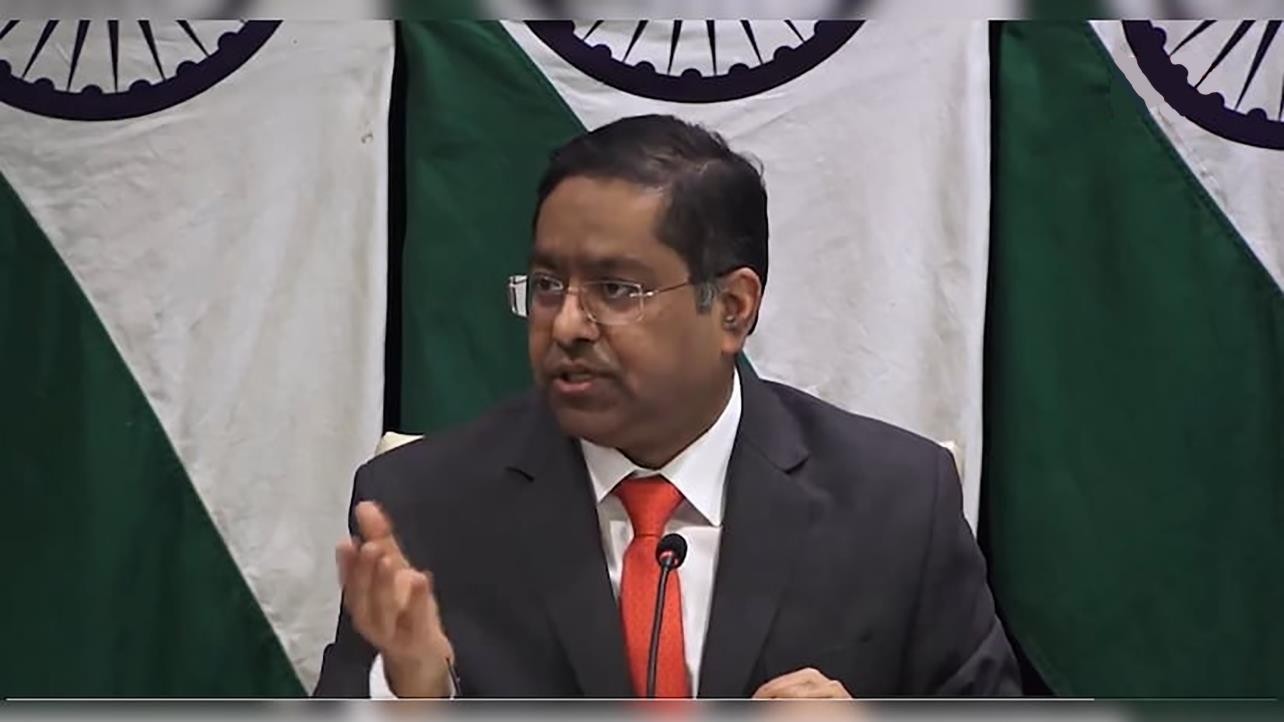
- A day after rebel forces overthrew President Bashar Assad's authoritarian government in Syria, India on Dec 09 2024 joined leading nations to call for stability and preserve the unity, sovereignty and territorial integrity of the Arab nation.
- The Ministry of External Affairs (MEA) said it is monitoring the unfolding developments in Syria and advocated a peaceful and inclusive Syrian-led political process going forward in that country.
- The MEA said the Indian embassy in Damascus is in contact with the Indian community in Syria for their "safety and security".
- According to official data, there are about 90 Indian nationals in Syria, including 14 who are working in various UN organisations.
- In an advisory issued on Friday, the Ministry of External Affairs (MEA) asked Indian citizens to avoid travelling to Syria.
- The ministry also asked Indians currently residing in Syria to remain in touch with the Indian embassy in Damascus.
What is the relevance of the topic for UPSC CSE?
For Prelims: Syria crisis, Middle east, Arab league Al-Aqsa Mosque, Israel, UNSC.
For Mains: Impact of the ongoing Syria crisis conflict on the stability of the Middle East region.
Some Previous Years Prelims Questions
Consider the following pairs: (2018)
| Towns | Country |
|---|---|
1. Aleppo |
Syria |
2. Kirkuk |
Yemen |
3. Mosul |
Palestine |
4. Mazar-i-sharif |
Afghanistan |
Which of the pairs given above are correctly matched?
(a) 1 and 2
(b) 1 and 4
(c) 2 and 3
(d) 3 and 4
Q2. The Yom Kippur War was fought between which sides/ countries? (2008)
(a) Turkey and Greece
(b) Serbs and Croats
(c) Israel, and Arab countries led by Egypt and Syria
(d) Iran and Iraq
Q3. Which one of the following countries of South-West Asia does not open out to the Mediterranean Sea? (2015)
(a) Syria
(b) Jordan
(c) Lebanon
(d) Israel
Q4. The area known as ‘Golan Heights’ sometimes appears in the news in the context of the events related to (2015)
(a) Central Asia
(b) Middle East
(c) South-East Asia
(d) Central Africa
Some Previous Years Mains Questions
Q1. The Indian diaspora has scaled new heights in the West. Describe its economic and political benefits for India. [10 Marks] [2023]
Some Questions from This Year and Previous Years Interview Transcripts
Board Sanjay Verma Sir:
- What is the reason for the involvement of so many countries in syria?
Board BB Swain sir:
- Whether the regionalisation of the Israel-Hamas war has started.
- Where did Iran conduct airstrikes yesterday?
Board RN Choubey sir:
- Tell me something about Human right violation in Afghanistan Iran and Syria
Some Questions for QUIZ
Q1. Consider the following Countries:
1. Turkey
2. Iraq
3. Jordan
4. Lebanon
5. Israel
How many of the above countries border Syria?
(a) Only two
(b) Only three
(c) Only four
(d) All five
Some Questions for POLL
Q1. Can recent Syrian development impact Israel-Hezebollah peace deal?
(a) YES
(b) NO
(c) Can’t say
Q2. Should India be concerned about power change in Syria?
(a) YES
(b) NO
(c) Can’t say
QUICK LINKS